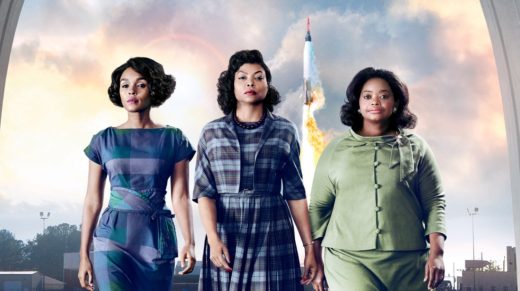
History abounds with examples of unsung science heroes, researchers and visionaries whose tireless efforts led to enormous breakthroughs and advances, often without credit or lasting widespread esteem. This is particularly true for women and minorities, who have historically been under-represented in STEM-related fields. English mathematician Ada Lovelace is broadly considered the first great tech and computing visionary — she pioneered computer programming language and helped construct what is considered the first computing machine (the Babbage Analytical Engine) in the mid-1800s. Physical chemist Dr. Rosalind Franklin performed essential X-ray crystallography work that ultimately revealed the double-helix shape of DNA (Photograph 51 is one of the most important images in the history of science). Her work was shown (without her permission) to rival King’s College biology duo Watson and Crick, who used the indispensable information to elucidate and publish the molecular structure of DNA, for which they would win a Nobel Prize. Dr. Percy Julian, a grandson of slaves and the first African-American chemist ever elected to the National Academy of Sciences, ingeniously pioneered the synthesis of hormones and other medicinal compounds from plants and soybeans. New movie Hidden Figures, based on the exhaustively researched book by Margot Lee Shetterley, tells the story of three such hitherto obscure heroes: Katherine Johnson, Dorothy Vaughn and Mary Jackson, standouts in a cohort of African-American mathematicians that helped NASA launch key missions during the tense 19060s Cold War “space race.” More importantly, Hidden Figures is a significant prototype for purpose-driven popular science communication — a narrative and vehicle for integrated multi-media platforms to encourage STEM diversity and scientific achievement.
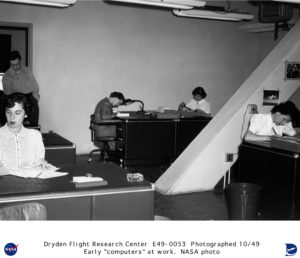
The participation of women in astrophysics, space exploration and aeronautics goes back to the 1800s at the Harvard College Observatory, as chronicled by Dava Sobell in The Glass Universe, a companion book to Hidden Figures. These women, every bit as intellectually capable and scientifically curious as their male counterparts, took the only opportunity afforded to them, as human “computers,” literally calculating, measuring and analyzing the classification of our universe. By the 1930s, the National Advisory Committee for Aeronautics, a precursor that would be subsumed by the creation of NASA in 1958, hired five of these female computers for their Langley aeronautical building in Hampton, Virginia. Shortly after World War II, with the expansion of the female workforce and war fueling innovation for better planes, NACA began hiring college-educated African American female computers. They were segregated to the Western side of the Langley campus (referred to as the “West Computers”), and were required to use separate bathroom and dining facilities, all while being paid less to do equal work as their white counterparts. Many of these daily indignities were chronicled in Hidden Figures. By the 1960s, the Space Program at NASA was defined by the two biggest sociopolitical events of the era: the Cold War and the Civil Rights Movement. Embroiled in an anxious race with Soviet astronauts to launch a man in orbit (and eventually, to the Moon), NASA needed to recruit the brightest minds available to invent seemingly impossible math to make the mission possible. Katherine Goble (later Johnson), was one of those minds.
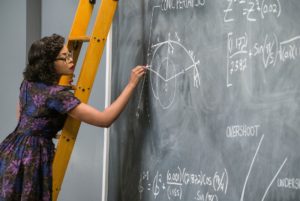
Katherine Johnson (portrayed by Taraji P. Henson) was a math prodigy. A high school freshman by the time she was 10 years old, Johnson’s fascination with numbers led her to a teaching position, and eventually, as a human calculator at the Langley NASA facility. Hand-picked to assist the Space Task Group, portrayed in the movie as Al Harrison (Kevin Costner), a fictionalized amalgamation of three directors Johnson worked with in her time at NASA, she had to traverse institutionalized racism, sexism and antagonistic collaborators in her path. Johnson would go on to calculate trajectories that sent both Alan Shepard and John Glenn into space, as well as key data for the Apollo Moon landing. Supporting Johnson are her good friends and fellow NASA colleagues Dorothy Vaughan (Octavia Spencer) and Mary Jackson (Janelle Monáe). Vaughan herself was a NASA pioneer, becoming the first black computing section leader and IBM FORTRAN programming expert. Jackson became the first black engineer at NASA, getting special permission to take advanced math courses in a segregated school.
Katherine Johnson’s legacy in science, mathematics, and civil rights cannot be understated. Current NASA chief Charles Bolden thoughtfully paid tribute to the iconic role model in Vanity Fair. “She is a human computer, indeed, but one with a quick wit, a quiet ambition, and a confidence in her talents that rose above her era and her surroundings,” he writes. The Langley NASA facility where she broke barriers and pioneered discovery honored Johnson by dedicating the building in her name last May. Late in 2015, Johnson was bestowed with a Presidential Medal of Freedom by President Barack Obama.
Featured prominently in Hidden Figures, technology giant IBM has had a long-standing relationship with NASA ever since the IBM 7090 became the first computing mainframe to be used for flight simulations, with the iconic System/360 mainframe engineering the Apollo Moon landing. Although IBM mainframes are no longer in use for mathematical calculations at NASA, they are partnering through the use of artificial intelligence for space missions. IBM Watson has the capability to sift through thousands of pages of information to get pilots critical data in real time and even monitor and diagnose astronauts’ health as a virtual/intelligence agent.
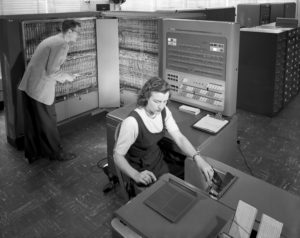
More importantly, IBM is taking a leadership role in developing STEM outreach education programs and a continued commitment to diversifying the technology workforce for the demands of the 21st Century. 50 years after Katherine Johnson’s monumental feats at NASA, the K-12 achievement gap between white and black students has barely budged. Furthermore, a 2015 STEM index analysis shows that even as the number of STEM-related degrees and jobs proliferates, deeply entrenched gaps between men and women, and an even wider gap between whites and minorities, remain in obtaining STEM degrees. This is exacerbated in the STEM work force, where diversity has largely stalled and women and minorities remain deeply under-represented. And yet, technology companies will need to fill 650,000 new STEM jobs (the fastest growing sector) by 2018, with the highest demand overall for so-called “middle-skill” jobs that may only require technical or community college preparation. Launched in 2011 by IBM, in collaboration with the New York Department of Education, P-TECH is an ambitious six-year education model predominantly aimed at minorities that combines college courses, internships and mentoring with a four year high school education. Armed with a combined high school and associates’ degree, these students would be immediately ready to fill high-tech, diverse workforce needs. Indeed, IBM’s original P-TECH school in Brooklyn has eclipsed national graduation rates for community college degrees over a two-year period, with the technology company committing to widely expanding the program in the coming years. Technology companies becoming stakeholders in, and even innovators of, educational models and partnerships can have profound impacts in innovation, economic growth and diminishing poverty through opportunity.

Dovetailing with the release of Hidden Figures, IBM has also partnered with The New York Times to launch their first augmented reality experience. Combining advocacy, outreach and data mining, the free, downloadable app called “Outthink Hidden” combines the inspirational stories portrayed in Hidden Figures with digitally-interactive content to create a PokemonGo-style nationwide hunt about STEM figures, historical leaders, places and areas of research across the country. The app can be used interactively at 150 locations in 10 U.S. cities, STEM Centers (such as NASA Langley Research Center and Kennedy Space Center) and STEM Universities to learn not just about the three mathematicians featured in Hidden Figures, but also other diverse STEM pioneers. Coupled with the powerful wide impact of Hollywood storytelling and a complimentary book release, “Outthink Hidden” could be an important prototype for engaging young tech-savvy students, possibly even in organized, classroom environments, and promoting interest in exploring STEM education, careers and mentorship opportunities.
There are no easy solutions for reforming STEM education or diversifying the talent pool in research labs and technology companies. But we can provide compelling narrative through movies and TV shows, and, increasingly, digital content. Perhaps the first step to inspiring and cultivating the next Katherine Johnson is simply to start by telling more stories like hers.
View a trailer for Hidden Figures:
*****************
ScriptPhD.com covers science and technology in entertainment, media and advertising. Hire our consulting company for creative content development. Follow us on Twitter and Facebook. Subscribe to our podcast on SoundCloud or iTunes.

From its earliest inceptions, science fiction has blurred the line between reality and technological fantasy in a remarkably prescient manner. Many of the discoveries and gadgets that have integrated seamlessly into modern life were first preconceived theoretically. More recently, the technologies behind ultra-realistic visual and motion capture effects are simultaneously helping scientists as research tools on a granular level in real time. The dazzling visual effects within the time-jumping space film Interstellar included creating original code for a physics-based ultra-realistic depiction of what it would be like to orbit around and through a black hole. Astrophysics researchers soon utilized the film’s code to visualize black hole surfaces and their effects on nearby objects. Virtual reality, whose initial development was largely rooted in imbuing realism into the gaming and video industries, has advanced towards multi-purpose applications in film, technology and science. The Science Channel is augmenting traditional programming with a ‘virtual experience’ to simulate the challenges and scenarios of an astronaut’s journey into space; VR-equipped GoPro cameras are documenting remote research environments to foster scientific collaboration and share knowledge; it’s even being implemented in health care for improving training, diagnosis and treatment concepts. The ability to record high-definition film of landscapes and isolated areas with drones, which will have an enormous impact on cinematography, carries with it the simultaneous capacity to aid scientists and health workers with disaster relief, wildlife conservation and remote geomapping.
The evolution of entertainment industry technology is sophisticated, computationally powerful and increasingly cross-functional. A cohort of interdisciplinary researchers at Northwestern University is adapting computing and screen resolution developed at DreamWorks Animation Studios as a vehicle for data visualization, innovation and producing more rapid and efficient results. Their efforts, detailed below, and a collective trend towards integration of visual design in interpreting complex research, portends a collaborative future between science and entertainment.
Not long into his tenure as the lead visualization engineer at Northwestern University’s Center For Advanced Molecular Imaging (CAMI), Matt McCrory noticed a striking contrast between the quality of the aesthetic and computational toolkits used in scientific research versus the entertainment industry. “When you spend enough time in the research community, with people who are doing the research and the visualization of their own data, you start to see what an immense gap there is between what Hollywood produces (in terms of visualization) and what research produces.” McCrory, a former lighting technical director at DreamWorks Animation, where he developed technical tools for the visual effects in Shark Tale, Flushed Away and Kung Fu Panda, believes that combining expertise in cutting-edge visual design with emerging tools of molecular medicine, biochemistry and pharmacology can greatly speed up the process of discovery. Initially, it was science that offered the TV and film world the rudimentary seeds of technology that would fuel creative output. But the TV and film world ran with it — so much so, that the line between science and art is less distinguishable than in any other industry. “We’re getting to a point [on the screen] where we can’t discern anymore what’s real and what’s not,” McCrory notes. “That’s how good Hollywood [technology] is getting. At the same time, you see very little progress being made in scientific visualization.”
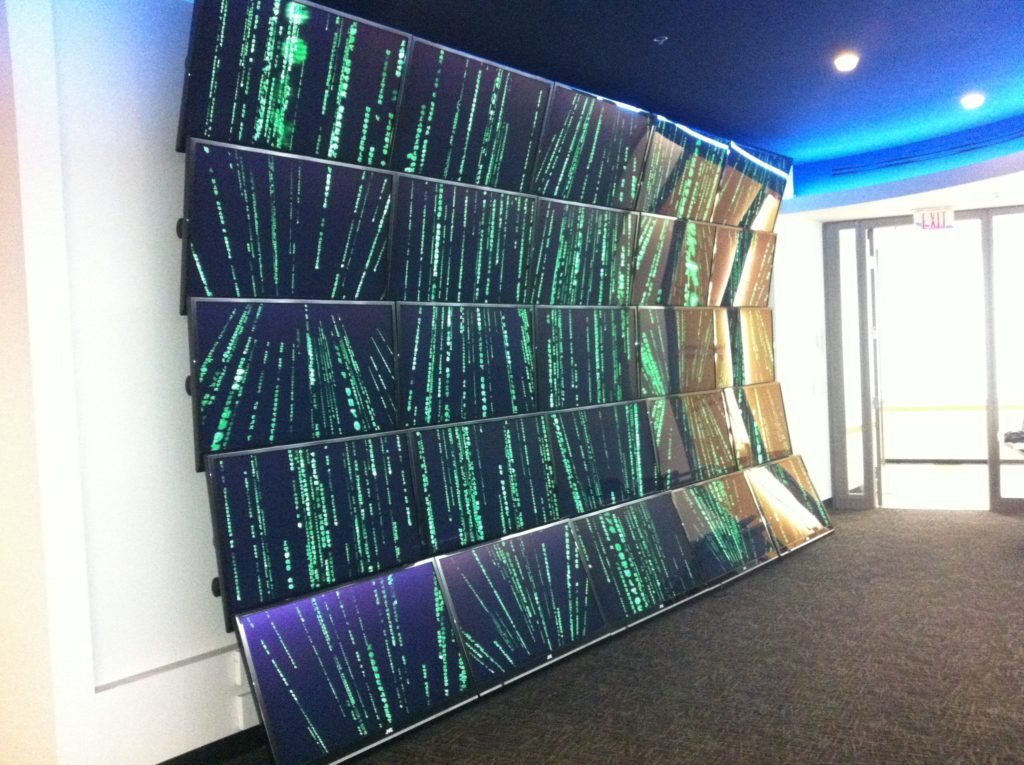
What is most perplexing about the stagnant computing power and visualization in science is that modern research across almost all fields is driven by extremely large, high-resolution data sets. A handful of select MRI imaging scanners are now equipped with magnets ranging from 9.4 to 11.75 Teslas, capable of providing cellular resolution on the micron scale (0.1 to 0.2 millimeters versus 1.5 Tesla hospital scanners, at 1 millimeter resolution) and cellular changes on the microsecond scale. The ultra high-resolution imaging provides researchers with insight into everything from cancer to neurodegenerative diseases. While most biomedical drug discovery today is engineered by robotics equipment, which screens enormous libraries of chemical compounds for activity potential around the clock in a “high-throughput” fashion — from thousands to hundreds of thousands of samples — data must still be analyzed, optimized and implemented by researchers. Astronomical observations (from black holes to galaxies colliding to detailed high-power telescope observations in the billions of pixels) produce some of the largest data sets in all of science. Molecular biology and genetics, which in the genomics era has unveiled great potential for DNA-based sub-cellular therapeutics, has also produced petrabytes of data sets that are a quandary for most researchers to store, let alone visualize.
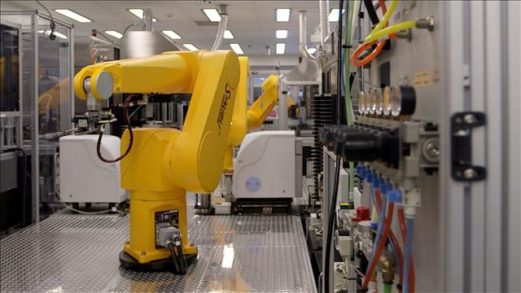
Unfortunately, most scientists can’t allocate dual resources to both advancing their own research and finding the best technology with which to optimize it. As McCrory points out: “In a field like chemistry or biology, you don’t have people who are working day and night with the next greatest way of rendering photo-realistic images. They’re focused on something related to protein structures or whatever their research is.”
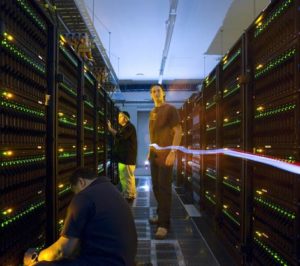
The entertainment industry, on the other hand, has a singular focus on developing and continuously perfecting these tools, as necessitated by proliferation of divergent content sources, screen resolution and powerful capture devices. As an industry insider, McCrory appreciates the competitive evolution, driven by an urgency that science doesn’t often have to grapple with. “They’ve had to solve some serious problems out there and they also have to deal with issues involving timelines, since it’s a profit-driven industry,” he notes. “So they have to come up with [computing] solutions that are purely about efficiency.” Disney’s 2014 animated science film Big Hero 6 was rendered with cutting-edge visualization tools, including a 55,000-core computer and custom proprietary lighting software called Hyperion. Indeed, render farms at LucasFilm and Pixar consist of core data centers and state-of-the-art supercomputing resources that could be independent enterprise server banks.
At Northwestern’s CAMI, this aggregate toolkit is leveraged by scientists and visual engineers as an integrated collaborative research asset. In conjunction with a senior animation specialist and long-time video game developer, McCrory helped to construct an interactive 3D visualization wall consisting of 25 high-resolution screens that comprise 52 million total pixels. Compared to a standard computer (at 1-2 million pixels), the wall allows researchers to visualize and manage entire data sets acquired with higher-quality instruments. Researchers can gain different perspectives on their data in native resolution, often standing in front of it in large groups, and analyze complex structures (such as proteins and DNA) in 3D. The interface facilitates real-time innovation and stunning clarity for complex multi-disciplinary experiments. Biochemists, for example, can partner with neuroscientists to visualize brain activity in a mouse as they perfect drug design for an Alzheimer’s enzyme inhibitor. Additionally, 7 thousand in-house high performing core servers (comparable to most studios) provide undisrupted big data acquisition, storage and mining.
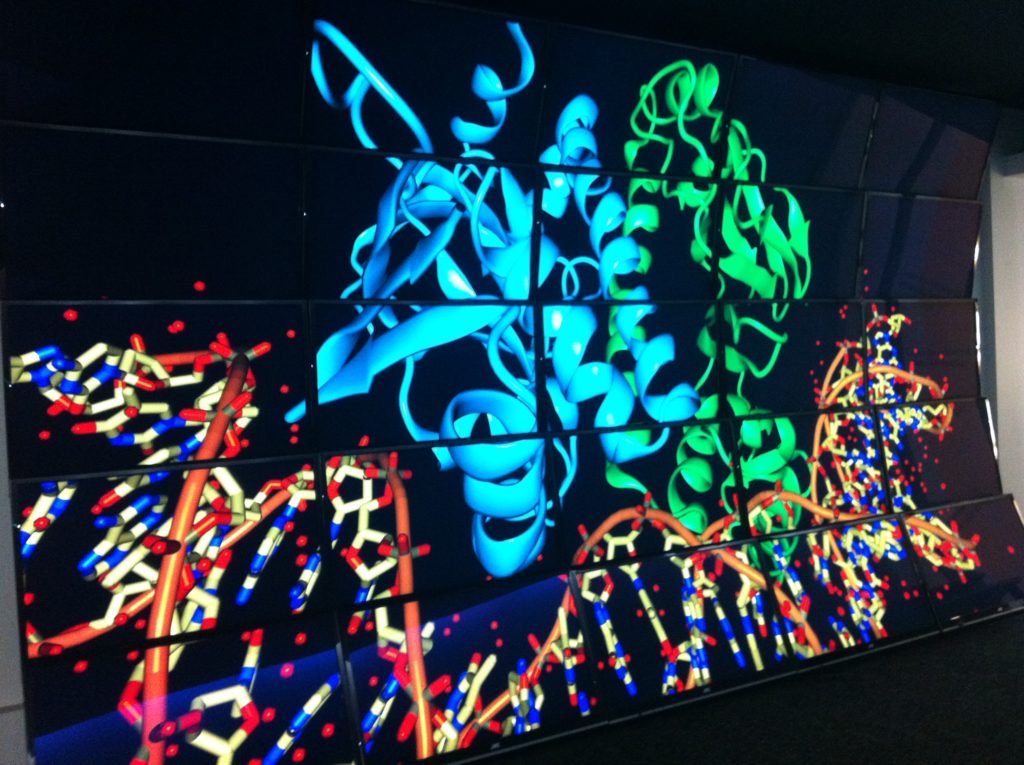
Could there be a day where partnerships between science and entertainment are commonplace? Virtual reality studios such as Wevr, producing cutting-edge content and wearable technology, could become a go-to virtual modeling destination for physicists and structural chemists. Programs like RenderMan, a photo-realistic 3D software developed by Pixar Animation Studios for image synthesis, could enable greater clarity on biological processes and therapeutics targets. Leading global animation studios could be a source of both render farm technology and talent for science centers to increase proficiency in data analysis. One day, as its own visualization capacity grows, McCrory, now pushing pixels at animation studio Rainmaker Entertainment, posits that NUViz/CAMI could even be a mini-studio within Chicago for aspiring filmmakers.
The entertainment industry has always been at the forefront of inspiring us to “dream big” about what is scientifically possible. But now, it can play an active role in making these possibilities a reality.
*****************
ScriptPhD.com covers science and technology in entertainment, media and advertising. Hire our consulting company for creative content development. Follow us on Twitter and Facebook. Subscribe to our podcast on SoundCloud or iTunes.

The current scientific landscape can best be thought of as a transitional one. With the proliferation of scientific innovation and the role that technology plays in our lives, along with the demand for more of these breakthroughs, comes the simultaneous challenge of balancing affordable lab space, funding and opportunity for young investigators and inventors to shape their companies and test novel projects. Los Angeles science incubator Lab Launch is trying to simplify the process through a revolutionary, not-for-profit approach that serves as a proof of concept for an eventual interconnected network of “discovery hubs”. Founder Llewelyn Cox sits down with ScriptPhD for an insightful podcast that assesses the current scientific climate, the backdrop that catalyzed Lab Launch, and why alternatives to traditional avenues of research are critical for fueling the 21st Century economy.
As science and biotechnology innovation go, we are, to put it in Dickensian terms, in the best of times and the worst of times.
On the one hand, we are in the midst of a pioneering golden age of discovery, biomedical cures and technological evolution. It seems that every day brings limitless possibility and unbridled imagination. Recent development of CRISPR gene-editing machinery will facilitate specific genome splicing and wholescale epigenetic insight into disease and function. Immunotherapy, programming the body’s innate immune system and utilizing it to eradicate targeted tumors, represents the biggest progress in cancer research in decades. For the first time ever, physicists have detected and quantified gravitational waves, underscoring Einsteins theory of gravity, relativity and how the space continuum expands and contracts. The private company SpaceX landed a rocket on a drone ship for the first time, enabling faster, cheaper launches and reusable rockets.
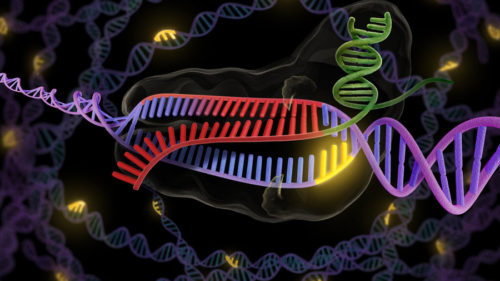
Despite these exciting and hopeful advancements, many of which have the potential to greatly benefit society and quality of life, there remain tangible challenges to fostering and preserving innovation. Academic science produces too many PhDs, which saturates the job market, stifles viable prospects for the most talented scientists and even hurts science in the long run. Exacerbating this problem is a shortage of basic research funding in the United States that represents the worst crisis in 50 years. And while European countries experience a similar pullback in grant availability, developing countries are investing in research as an avenue of future economic growth. High-risk, high-reward research, particularly from young investigators, is suppressed at the expense of “safe research” and already-wealthy, established labs. Conduits towards entrepreneurship are possible, many through commercializing academic findings, but few come without strings attached, start-up companies are in a 48% decline since the 1970s. With research and development stagnating at most big pharmaceutical companies and current biomedical research growth unsustainable, there is an unprecedented opportunity to disrupt the innovation pipeline and create a more robust economy.
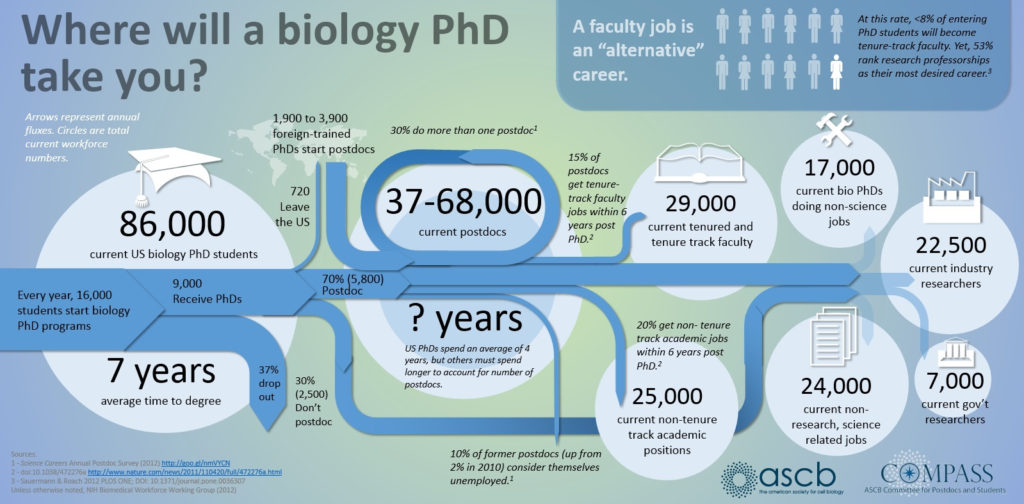
In an effort to boost discovery and development, there has been a permeation of venture capital accelerators and think-tank style early stage incubators from the technology sector into basic science; indeed it’s experiencing a proliferating boom. Affordable space, world-class facilities, access to startup capital and a opportunity to explore high-risk ideas — all are attractive to young academics and scientific entrepreneurs. Even pharmaceutical giants are spawning innovation arms as potential sources of future ideas. Large cities like New York are even using incubator space as a catalyst for growing a localized biotechnology-fueled economy. Such opportunities, however, don’t come without risk and collateral to innovators. As Mike Jones of science, inc. warns, the single biggest question that innovators must asses is: “Is the value I am getting equal to the risk I am saving, through equity?” Many incubators and accelerators act as direct conduits to academia and industry, both for talent recruitment and retention of intellectual material. In fact, the business model governing incubator space and asset allocation can often be nebulous, and sometimes further complicated by mandatory “collaborative” sharing not just of materials and space, but data and intellectual property. Even wealthy investors, who are now underwriting academic and private sector research, want a voice in the type of research and how it is conducted.
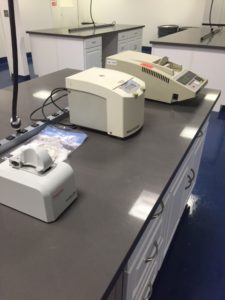
Amidst this idea-driven revolution was borne the concept of Lab Launch, a transformative permutation of incubator space for fostering pharmaceutical and biotechnology innovation. The fundamental principle behind Los Angeles-based Lab Launch is deceptively simple. As a not-for-profit endeavor, it provides simple, sleek and high-level equipment and space for life science and biotechnology experimentation. Because all shared equipment is donated as overflow from companies and laboratories that no longer need it, costs are minimized towards laboratory management fees and rental of facilities. As a stripped-down discovery engine model, this allows Lab Launch scientists to keep 100% of their intellectual property and equity, something that is virtually unheralded for young innovators at early-development stages. On a more complex level, the potential wide-scale benefits of Lab Launch (and future copycat spawns) are profound and resonant. In an industry where the Boston-San Francisco-San Diego triumvirate presents a near-hegemony for biotechnology funding, development and intellectual assets, the growth of simple, inexpensive science incubators in large cities carries tremendous economic upside. Critics might point out the lack of substantive guidance and elite think tank access of such a platform, yet 90% of all incubators and accelerators still fail, regardless. Moreover, selection criteria are often biased towards specific business interests or research aims that buoy academia and venture capital profiteers, which weed out the most high-risk ideas and participants. How, for example, would a scientist without a PhD or prestigious pedigree get access to a mainstream incubator lab space? How would a radically non-traditional idea or approach merit mainstream support or funding? A recent Harvard Business Review article suggests that lean start-ups with the most efficient, bare-bones development models, have far higher success rates and should be the template for driving an innovation-based economy. As elucidated in the podcast below, opening doors to facilitate proof-of-concept innovation and linking a virtual network of lab spaces will give rise to not just the next Silicon Valley, but the great scientific breakthroughs of tomorrow.
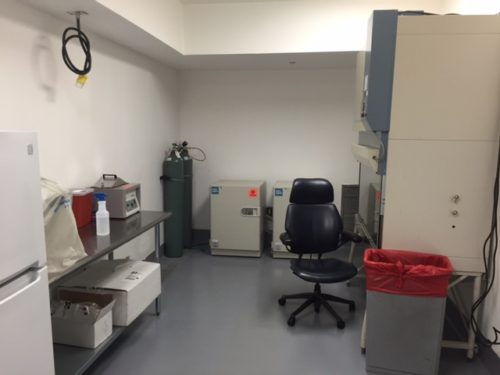
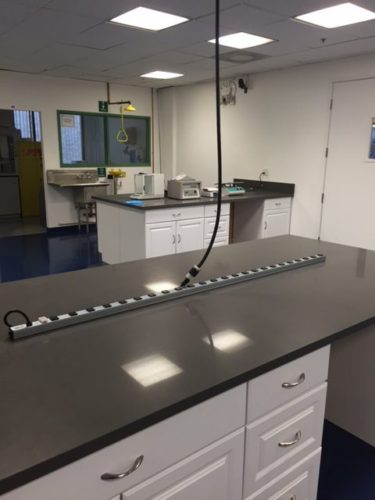
Lab Launch founder Dr. Llewellyn Cox sat down with ScriptPhD for a podcast interview to talk about his revolutionary not-for-profit startup incubator and the challenging scientific environment that inspired the idea. Among our topics of discussion:
•How lack of funding and overflow of PhDs in the current scientific climate stifles creativity and innovation
•Why biotechnology will cultivate exciting new industries in the 21st Century
•How no strings attached incubators like Lab Launch help give rise to Silicon Valleys of the future
•Why we should in fact be hopeful about how scientific progress is advancing
*****************
ScriptPhD.com covers science and technology in entertainment, media and advertising. Hire our consulting company for creative content development. Follow us on Twitter and Facebook. Subscribe to our podcast on SoundCloud or iTunes.
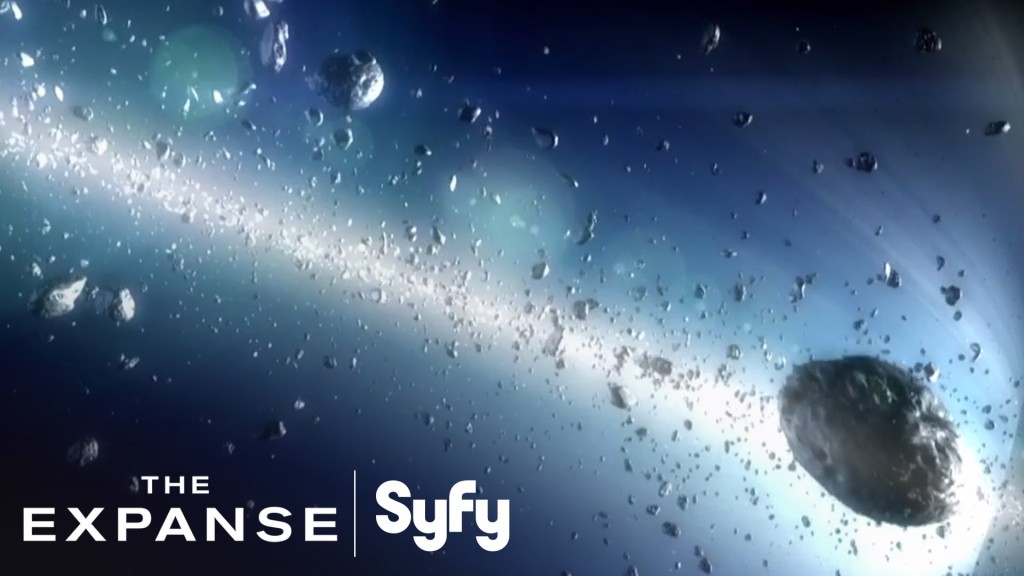
Space exploration is enjoying its greatest popularity revival since the Cold War, both in entertainment and the realm of human imagination. Thanks in large part to blockbusters like Gravity, The Martian and Interstellar, not to mention privatized innovation from companies like SpaceX, and fascination with inter-galactic colonization has never been more trenchant. Despite the brimming enthusiasm, there hasn’t been a film or TV series that has tackled the subject matter in a nuanced way. Until now. The Expanse, ambitiously and faithfully adapted by SyFy Channel from the best-selling sci-fi book series, is the best space epic series since Battlestar Galactica. It embraces similar complex, grandiose and ethically woven storylines of human survival and morality amidst inevitable technological advancement. Below, a full ScriptPhD review and in-depth podcast with The Expanse showrunner Naren Shankar.
200 years in future, humans have successfully colonized space, but not without discord. The Earth, overpopulated and severely crunched for resources, has expanded to the asteroid belt and a powerful, wealthy and now-autonomous Mars. Though the colonies of the asteroid belt are controlled by Earth (largely to pillage materials and water), its denizens are second-class citizens, exploited by wealthy corporations for deadly labor. Inter-colony friction, class warfare, resource allocation and uprising frame the backdrop for a political standoff between Mars and Earth that could destroy humanity.
Deeper questions of righteous terrorism, political conspiracy and human rights are embodied in a triumvirate of smart, interweaving plots that will eventually coalesce to unravel the fundamental mystery. Josephus Miller (Thomas Jane) is a great detective, but a lowly belter and miserable alcoholic, mostly paid to settle minor Belt security and corporate matters. But when he’s hired to botch an investigation into the disappearance of a wealthy Earth magnate’s family, Miller starts to uncover dangerous connections between political unrest and the missing heiress. Jim Holden (Steven Strait) is a reluctant hero – a “Belter” ship captain thrown into a tragic quest for justice – who unwittingly leads his mates directly into the conflict between Mars and Earth and, as he delves deeper, unravels a potentially calamitous galactic threat. Finely balancing this tightwire is Chrisjen Avasarala (Shohreh Aghdashloo), the Deputy Undersecretary of the United Nations, who must balance the moral quandaries of peacekeeping with a steely determination to avoid war at all costs.
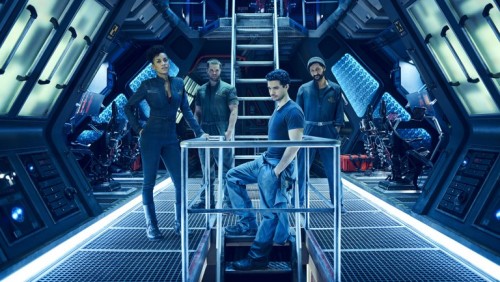
Colonization is a very trendy topic right now in space and astrophysics circles, particularly on Mars, having discovered liquid water, which fosters favorable conditions for the evolution and sustainability of life. Could it ever actually happen? There would certainly be considerable engineering and habitability obstacles.
For now, modest manned exploration of Mars and Europa by human astronauts is a tentative first step for NASA.
The Expanse assumes all these challenges and explorations have ben overcome, and picks up at a time when humans biggest problem isn’t conquering space – it’s conquering each other. The show is sleek and very technologically adept, in direct visual contrast to the more dilapidated environment of Battlestar Galactica. Fans of geek chic technology can ogle at complex docking stations as ships move around the belt to and from Earth and Mars, see through tablets, pills that induce omniscience during interrogations and ubiquitous voice-controlled artificial intelligence. However, though a new way of life has been established, remnants of our current quotidian existence and human essence are still instantly recognizable. This isn’t the techno-invasive dystopia of Blade Runner or Minority Report.

Like, Battlestar Galactica, (a show The Expanse will invariably be compared to) there is a crisp, smart overarching commentary on human existentialism under tense circumstances. Survival and life in space. Adapting to the changing gravitational forces and physical conditions of travel between planets and the asteroid belt colonies. Most importantly, navigating the incendiary dynamics of a species on the brink of all-out galactic warfare. As show runner Naren Shankar mentions in our podcast below, all great sci-fi is historically rooted in allegory – the exploration of disruptive technological innovation (and the fear thereof) as a symbol of combating inequality and/or political injustice. At a time of great social upheaval in our world, a fight for dwindling global resources and against proliferating environmental devastation, many of the themes explored in The Expanse books and series are eerily salient. Perhaps they also act as a reminder that even if a technological revolution facilitates an eventual expansion into outer space, our tapestry of inclinations (good and bad) is sure to follow.
Naren Shankar, the executive producer and show runner of The Expanse, helped develop the adaptation of the sci-fi series buoyed by decades of merging the creative compasses of science and entertainment. A PhD-educated physicist and engineer, Shankar was a writer/producer on Star Trek: The Next Generation, Almost Human and Grimm, as well as a co-showrunner of the groundbreaking forensics procedural CSI. Dr. Shankar exclusively joined the ScriptPhD.com podcast to discuss his transition from PhD scientist to working Hollywood writer, the lasting iconic impact of Star Trek and CSI and how The Expanse evokes the best allegory and elements of the sci-fi genre to tell an existential narrative. Listen below:
*****************
ScriptPhD.com covers science and technology in entertainment, media and advertising. Hire our consulting company for creative content development. Follow us on Twitter and Facebook. Subscribe to our podcast on SoundCloud or iTunes.
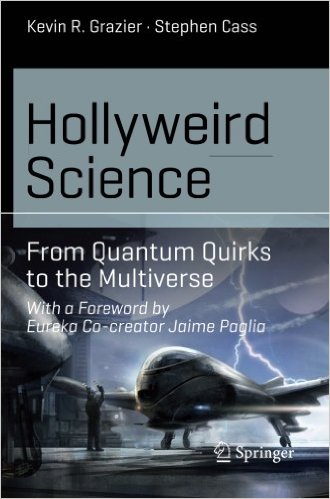
Dr. Kevin Grazier has made a career of studying intergalactic planetary formation, and, over the last few years, helping Hollywood writers integrate physics smartly into storylines for popular TV shows like Battlestar Galactica, Eureka, Defiance and the blockbuster film Gravity. His latest book, Hollyweird Science: From Quantum Quirks to the Multiverse traverses delightfully through the science-entertainment duality as it first breaks down the portrayal of science in movies and television, grounding the audience in screenplay lexicon, then elucidates a panoply of physics and astronomy principles through the lens of storylines, superpowers and sci-fi magic. With the help of notable science journalist Stephen Cass, Hollyweird Science is accessible to the layperson sci-fi fan wishing to learn more about science, a professional scientist wanting to apply their knowledge to higher-order examples from TV and film or Hollywood writers and producers of future science-based materials. From case studies, to in-depth interviews to breaking down the Universe and its phenomena one superhero and far-away galaxy at a time, this first volume of an eventual trilogy is the essential foundation towards understanding how science is integrated into a story and ensuring that future TV shows and movies do so more accurately than ever before. Full ScriptPhD review and podcast with author and science advisor Dr. Grazier below.
Most people who watch movies and TV shows never went to film school. They are not familiar with the intricacies of three-act structure, tropes, conceits and MacGuffins that are the skeletal framework of a standard storytelling toolkit. Yet no genre is more rooted in and dependent on setup and buying into a payoff than sci-fi and films conceptualized in scientific logic. Many, if not most, critiques of science in entertainment don’t fully acknowledge that integrating abstruse science/technology with the complex constraints of time, length, character development and screenplay format is incredibly demanding. Hollyweird Science does point out some egregious examples of “information pollution” and the “Hollywood Curriculum Cycle” – the perpetuation bad, if not fictitious, science. But after grounding the reader in a primer of the fundamental building blocks of movie-making and TV structure, not only is there a more positive, forgiving tone in breaking down the history of the sci-fi canon (some of which predicted many of the technological gadgets we enjoy today), but even a celebration of just how much and how often Hollywood gets the science right.
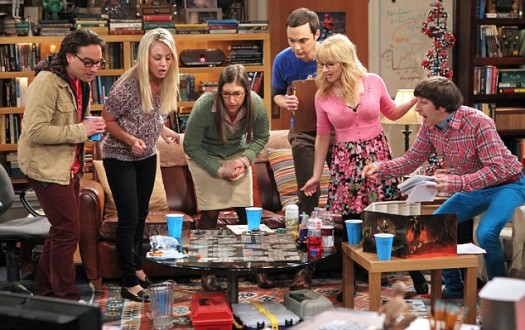
Conversely, the vast majority of Hollywood writers, producers and directors don’t regularly come across PhD scientists in real life, and have to form impressions of doctors, scientists and engineers based on… other portrayals in entertainment. Scientists, after all, represent only 0.2 percent of the U.S. population as a whole, and less than 700,000 of all jobs belong to doctors and surgeons. And while these professions are amply represented on screen in number, that’s not necessarily been the case in accuracy. The insular self-reliance of screenwriters on their own biases has led to stereotyping and pigeonholing of scientists into a series of familiar archetypes (nerds, aloof omniscient sidekicks), as Grazier and Cass take us through a thorough, labyrinthine archive of TV and movie scientists. But as scientists have become more involved in advising productions, and have become more prominent and visible in today’s innovation-driven society, their on screen counterparts have likewise become a more accurate reflection of these demographics – mainstream hits like The Big Bang Theory, CSI (and its many procedural spinoffs), Breaking Bad and films like Gravity, The Martian, Interstellar and The Imitation Game are just a recent sampling.

If you’re going to teach a diverse group of readers about the principles of physics, astronomy, quantum mechanics and energy forms, it’s best to start with the basics. Even if you’ve never picked up a physics textbook, Hollyweird Science provides a fundamental overview of matter, mass, elements, energy, planet and star formation, time, radiation and the quantum mechanics of universe behavior. More important than what these principles are, Grazier discerns what they are not, with running examples from iconic television series, movies and sci-fi characters. What exactly is the difference between weight and mass and force, per the opening scene of the film Gravity? How are different forms of energy classified? Are the radioactive giants of Godzilla and King Kong realistic? What exactly happens when Scotty is beamed up? Buoying the analytical content are a myriad of interviews with writers and producers, expounding honestly about working with scientists, incorporating science into storytelling and where conflicts arose in the creative process.

People who want to delve into more complex science can do so through “science boxes” embedded throughout the book – sophisticated mathematical and physics analyses of entertainment staples, trivial and significant. Among my favorites: why Alice in Wonderland is a great example of allometric scaling, the thermal radiation of cinematography lighting, hypothesizing Einsteinian relativity for the Back To The Future DeLorean, and just how hot is The Human Torch in the Fantastic Four? (Pretty dang hot.)
The next time readers see an asteroid making a deep impact, characters zipping through interplanetary travel, or an evil plot to harbor a new form of destructive energy, they’ll have a scientific foundation to ask simple, but important, questions. Is this reasonable science, rooted in the principles of physics? Even if embellished for the sake of advancing a story, could it theoretically happen? And for Hollywood writers, how can science advance a plot or help a character solve their connundrum? In our podcast below, Dr. Grazier explains why physics and astronomy were such an important bedrock of the first book – and of science-based entertainment – and previews what other areas of science, technology and medicine future sequels will analyze.
In the long run, Hollyweird Science will serve as far more than just a groundbreaking book, regardless of its rather seamless nexus between fun pop culture break-down and serious scientific didactic tool. It’s a part of a conceptual bridge towards an inevitable intellecutal alignment between Hollywood, science and technology. Over the last 10-15 years, portayal of scientists and ubiquity of science content has increased exponentially on screen – so much so, that what was a fringe niche even 20 years ago is now mainstream and has powerful influence in public perception and support for science. Science and technology will proliferate in importance to society, not just in the form of personal gadgets, but as problem-solving tools for global issues like climate change, water access and advancing health quality. Moreover, at a time when Americans’ grasp of basic science is flimsy, at best, any material that can repurpose the universal love of movies and television to impart knowledge and generate excitement is significant. We are at the precipice of forging a permanent link between Hollywood, science and pop culture. The Hollyweird series is the perfect start.
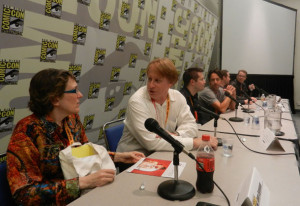
In an exclusive podcast conversation with ScriptPhD.com, Dr. Grazier discussed the overarching themes and concepts that influenced both “Hollyweird Science” and his ongoing consulting in the entertainment industry. These include:
•How the current Golden Age of sci-fi arose and why there’s more science and technology content in entertainment than ever
•Why scientists and screenwriters are remarkably similar
•Why physics and astronomy are the building blocks of the majority of science fiction
•How the “Hollyweird Science” trilogy can be used as a didactic tool for scientists and entertainment figures
•His favorite moments working both in science and entertainment
*****************
ScriptPhD.com covers science and technology in entertainment, media and advertising. Hire our consulting company for creative content development. Follow us on Twitter and Facebook. Subscribe to our podcast on SoundCloud or iTunes.
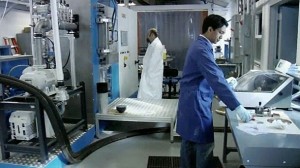
The last 25 years have brought an unprecedented level of scientific and technological advances, impacting virtually all dimensions of society, from communication and the digital revolution, to economics and food production to nanotechnology and medicine – and that’s just a start. The next few decades will rapidly expand this progress with exponential discovery and innovation, amidst more pressing global challenges than we’ve ever faced before. The opportunities to develop faster, better and cheaper products that improve modern living are limitless – Tesla electric cars, energy-saving fuels and machines, robotics – but they all share a common basic need for developing and studying materials in a more efficient manner. This will require a real-time acceleration of sharing, analytics and simulation through readily accessible databases. Essentially, an open-source wiki for materials scientists. In our in-depth article below, ScriptPhD.com explains why materials science is the most critical gateway towards 21st Century technology and how California startup company Citrine Informatics is providing revolutionary new information extraction software to create a crowdsourced, open access database available to any scientist.
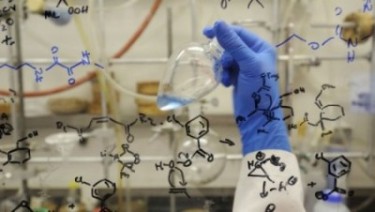
There has been a public access revolution of sorts transforming science. A necessary one, at that. Science funding is in crisis. The peer-review process is under heavy scrutiny. And scientists are turning to transparency to help. Some notable billionaires are circumventing public funding and privatizing science. Molecular biologist Ethan Perlstein has used crowdfunding to raise hundreds of thousands of dollars from the public at large for a basic research lab. Last fall, as the Ebola crisis gripped the world’s attention, an expert researcher at The Scripps Research Institute (where I received a PhD) appealed to public crowd funding to raise $100,000 for vaccine research. With platforms like Experiment, RocketHub and KickStarter proliferating support for science, the public at large has begun to serve as an important incubator of innovation. More importantly, researchers are increasingly rethinking traditional academic publishing and recognizing the value of open data sharing through publications and databases. The Public Library of Science (PLoS) is the biggest non-profit advocate and publisher of open access research. Mainstream journals like Science have begun publishing free web-based alternatives that are immediately accessible. Calls for unified data sharing have grown louder and more widespread. Even the FDA has announced plans for crowdsourcing a genomics research platform to improve efficiency of diagnostic and clinical tests and their analysis. Far from hindering the scientific process and output, these efforts have accelerated alternative means of funding, data acquisition and exchange, collaboration and ultimately, discovery.
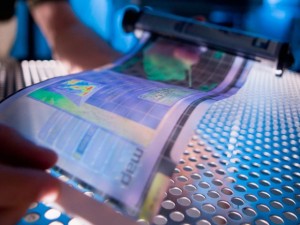
Think about virtually any practical aspect of life and it relies on materials. Transportation of any kind, Kevlar vests, sports equipment, communication devices, clothing, growing and making food… it’s impossible to think about modern society in even the most impoverished developing countries without them. Now think on a bigger scale. Superconductors. Carbon nanotubules. Graphene. The materials of the future that make even these breakthroughs obsolete. So crucial is materials science to all facets of economics, research and quality of life, that in 2011, the United States Government launched a Materials Genome Initiative. A partnership between the private sector industry, universities, and the government, its primary goal is to utilize a materials genome approach to cut the cost and time to market for basic materials products by 50%.

The only problem with materials research? Data. And lots of it. Aided largely by digital services and a proliferation of technology research – not to mention marketplace for the products that it makes possible – there is so much data produced today that the process of testing, developing, tweaking and inserting a material into a product takes about 20 years, according to the National Academy of Sciences. To combat this, materials scientists and engineers have growingly embraced a similar open access philosophy to that of life scientists. Leading science publisher Elsevier recently launched an infrastructure called “Open Data” to facilitate materials science data sharing across thirteen major publications. The Lawrence Berkeley National Laboratory just created the world’s largest database of elastic properties, a virtual gold mine for scientists working on materials that require mechanical properties for things like cars and airplanes. NASA has even opened a Physical Science Informatics database of all of its space station materials research in the hopes that the crowdsourcing accelerates engineering research discovery, applicable both to space and Earth.
Citrine Informatics, a startup company in California, is hoping to unify these concepts of data sharing and mining through open access web-based software (boosted by crowdsourcing) to build a comprehensive, open database of materials and chemical data. Essentially, Citrine is rolling out a cloud platform (Citrination) that will act as a digital middle man between data acquisition and product development. And rather than storing it in vastly differing locations under differing access guidelines, Citrination’s algorithms gather all available data (from publications to databases to publicly shared data from private companies) in order to show properties under different conditions, including when they might fail. A simple, mainframe registry database allows users to upload data, build customized data sets and see all known properties of a particular material under all different physical conditions (see below). Rater than testing and retesting internal materials data internally, thus lengthening R&D pipelines, research labs can simply model based on available information and adjust experiments accordingly.
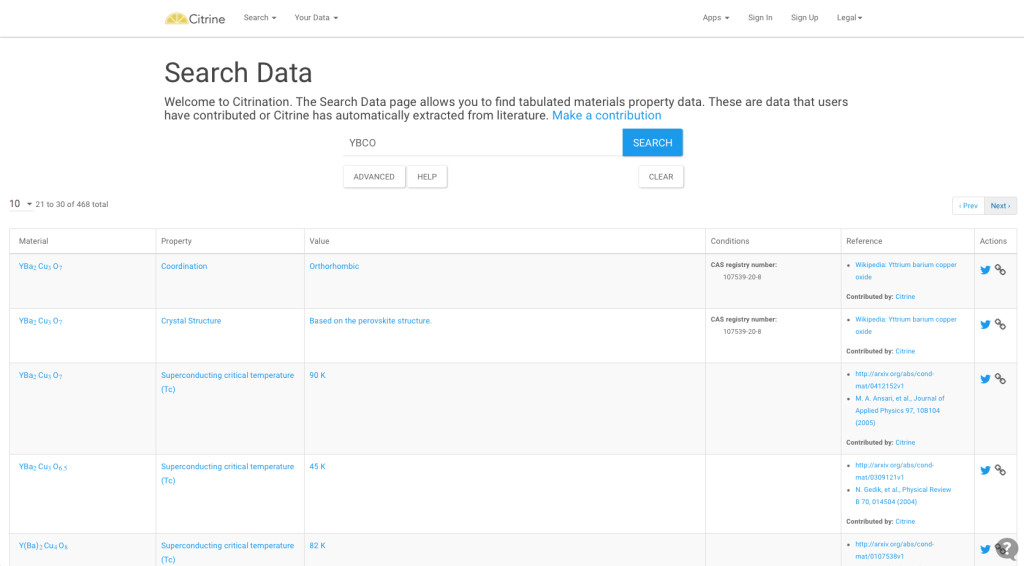
“What we do represents a big change in the status quo,” co-founder Bryce Meredig says. “A lot of the scientists in these industries don’t have a natural inclination to turn to software to solve these problems.” Until now. The software will be made free to not for profit research institutions and will sell to materials and chemical companies that want to avail themselves of the wealth of data. Citrine has used a large recent infusion of grant funding to raise their ambition beyond a database and towards applications like 3D printing, renewable energy technology (co-founder Greg Mulholland was recognized by Forbes as a 30 under 30 leader in energy) and the next generation of devices.
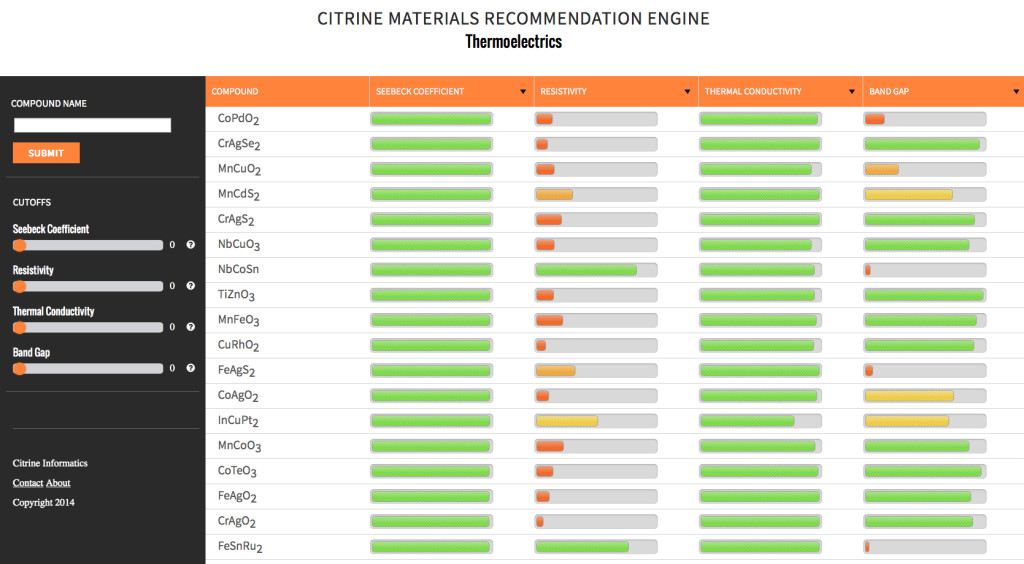
The practical benefits to society as a whole of extending open access and crowdsourcing to materials science are tremendous. On an individual level, virtually every computer and mobile device we put in our hands, every gadget and machine we buy in the future will depend on improved materials. On a more wide-scale level, materials will be at the forefront of solving the most complex, important challenges to our planet and its inhabitants, none more important than the energy crisis. Food production, water purification and distribution, transportation, infrastructure all will rely on creating sustainable energy. More ambitious endeavors such as space travel, medical treatments and advanced research collaborations will be even more reliant on new and improved materials. The faster that scientists, researchers and engineers are able to mine data from previous experiments, replicate it and design smarter studies based on computerized algorithms of how those materials behave, the faster they can produce breakthroughs in the laboratory and into the marketplace. The stakes are high. The scientific rewards are infinite. The time to open and use a free-access materials database is now.
This article was sponsored by Citrine Informatics.
*****************
ScriptPhD.com covers science and technology in entertainment, media and advertising. Hire our consulting company for creative content development. Follow us on Twitter and Facebook. Subscribe to our podcast on SoundCloud or iTunes.
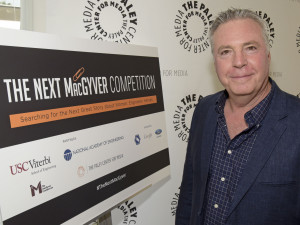
Engineering has an unfortunate image problem. With a seemingly endless array of socioeconomic, technological and large-scale problems to address, and with STEM fields set to comprise the most lucrative 21st Century careers, studying engineering should be a no-brainer. Unfortunately, attracting a wide array of students — or even appreciating engineers as cool — remains difficult, most noticeably among women. When Google Research found out that the #2 reason girls avoid studying STEM fields is perception and stereotypes on screen, they decided to work with Hollywood to change that. Recently, they partnered with the National Academy of Sciences and USC’s prestigious Viterbi School of Engineering to proactively seek out ideas for creating a television program that would showcase a female engineering hero to inspire a new generation of female engineers. The project, entitled “The Next MacGyver,” came to fruition last week in Los Angeles at a star-studded event. ScriptPhD.com was extremely fortunate to receive an invite and have the opportunity to interact with the leaders, scientists and Hollywood representatives that collaborated to make it all possible. Read our full comprehensive coverage below.
“We are in the most exciting era of engineering,” proclaims Yannis C. Yortsos, the Dean of USC’s Engineering School. “I look at engineering technology as leveraging phenomena for useful purposes.” These purposes have been recently unified as the 14 Grand Challenges of Engineering — everything from securing cyberspace to reverse engineering the brain to solving our environmental catastrophes to ensuring global access to food and water. These are monumental problems and they will require a full scale work force to fully realize. It’s no coincidence that STEM jobs are set to grow by 17% by 2024, more than any other sector. Recognizing this opportunity, the US Department of Education (in conjunction with the Science and Technology Council) launched a five-year strategic plan to prioritize STEM education and outreach in all communities.
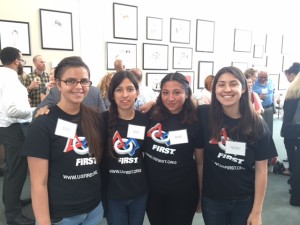
Despite this golden age, where the possibilities for STEM innovation seem as vast as the challenges facing our world, there is a disconnect in maximizing a full array of talent for the next generation of engineers. There is a noticeable paucity of women and minority students studying STEM fields, with women comprising just 18-20% of all STEM bachelor’s degrees, regardless of the fact that more students are STEM degrees than ever before. Madeline Di Nono, CEO of the Geena Davis Institute on Gender in Media and a judge at the Next MacGyver competition, boils a lot of the disinterest down to a consistent lack of female STEM portrayal in television and film. “It’s a 15:1 ratio of male to female characters for just STEM alone. And most of the science related positions are in life sciences. So we’re not showing females in computer science or mathematics, which is where all the jobs are going to be.” Media portrayals of women (and by proxy minorities) in science remains shallow, biased and appearance-focused (as profiled in-depth by Scientific American). Why does this matter? There is a direct correlation between positive media portrayal and STEM career participation.
It has been 30 years since the debut of television’s MacGyver, an action adventure series about clever agent Angus MacGyver, working to right the wrongs of the world through innovation. Rather than using a conventional weapon, MacGyver thwarts enemies with his vast array of scientific knowledge — sometimes possessing no more than a paper clip, a box of matches and a roll of duct tape. Creator Lee Zlotoff notes that in those 30 years, the show has run continuously around the world, perhaps fueled in part by a love of MacGyver’s endless ingenuity. Zlotoff noted the uncanny parallels between MacGyver’s thought process and the scientific method: “You look at what you have and you figure out, how do I turn what I have into what I need?” Three decades later, in the spirit of the show, the USC Viterbi School of Engineering partnered with the National Academy of Sciences and the MacGyver Foundation to search for a new MacGyver, a television show centered around a female protagonist engineer who must solve problems, create new opportunities and most importantly, save the day. It was an initiative that started back in 2008 at the National Academy of Sciences, aiming to rebrand engineering entirely, away from geeks and techno-gadget builders towards an emphasis on the much bigger impact that engineering technology has on the world – solving big, global societal problems. USC’s Yortsos says that this big picture resonates distinctly with female students who would otherwise be reluctant to choose engineering as a career. Out of thousands of submitted TV show ideas, twelve were chosen as finalists, each of whom was given five minutes to pitch to a distinguished panel of judges comprising of writers, producers, CEOs and successful show runners. Five winners will have an opportunity to pair with an established Hollywood mentor in writing a pilot and showcasing it for potential production for television.
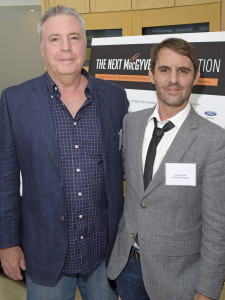
If The Next MacGyver feels far-reaching in scope, it’s because it has aspirations that stretch beyond simply getting a clever TV show on air. No less than the White House lent its support to the initiative, with an encouraging video from Chief Technology Officer Megan Smith, reiterating the importance of STEM to the future of the 21st Century workforce. As Al Roming, the President of the National Academy of Engineering noted, the great 1950s and 1960s era of engineering growth was fueled by intense competition with the USSR. But we now need to be unified and driven by the 14 grand challenges of engineering and their offshoots. And part of that will include diversifying the engineering workforce and attracting new talent with fresh ideas. As I noted in a 2013 TEDx talk, television and film curry tremendous power and influence to fuel science passion. And the desire to marry engineering and television extends as far back as 1992, when Lockheed and Martin’s Norm Augustine proposed a high-profile show named LA Engineer. Since then, he has remained a passionate advocate for elevating engineers to the highest ranks of decision-making, governance and celebrity status. Andrew Viterbi, namesake of USC’s engineering school, echoed this imperative to elevate engineering to “celebrity status” in a 2012 Forbes editorial. “To me, the stakes seem sufficiently high,” said Adam Smith, Senior Manager of Communications and Marketing at USC’s Viterbi School of Engineering. “If you believe that we have real challenges in this country, whether it is cybersecurity, the drought here in California, making cheaper, more efficient solar energy, whatever it may be, if you believe that we can get by with half the talent in this country, that is great. But I believe, and the School believes, that we need a full creative potential to be tackling these big problems.”
So how does Hollywood feel about this movement and the realistic goal of increasing its array of STEM content? “From Script To Screen,” a panel discussion featuring leaders in the entertainment industry, gave equal parts cautionary advice and hopeful encouragement for aspiring writers and producers. Ann Merchant, the director of the Los Angeles-based Science And Entertainment Exchange, an offshoot of the National Academy of Sciences that connects filmmakers and writers with scientific expertise for accuracy, sees the biggest obstacle facing television depiction of scientists and engineers as a connectivity problem. Writers know so few scientists and engineers that they incorporate stereotypes in their writing or eschew the content altogether. Ann Blanchard, of the Creative Artists Agency, somewhat concurred, noting that writers are often so right-brain focused, that they naturally gravitate towards telling creative stories about creative people. But Danielle Feinberg, a computer engineer and lighting director for Oscar-winning Pixar animated films, sees these misconceptions about scientists and what they do as an illusion. When people find out that you can combine these careers with what you are naturally passionate about to solve real problems, it’s actually possible and exciting. Nevertheless, ABC Fmaily’s Marci Cooperstein, who oversaw and developed the crime drama Stitchers, centered around engineers and neuroscientists, remains optimistic and encouraged about keeping the doors open and encouraging these types of stories, because the demand for new and exciting content is very real. Among 42 scripted networks alone, with many more independent channels, she feels we should celebrate the diversity of science and medical programming that already exists, and build from it. Put together a room of writers and engineers, and they will find a way to tell cool stories.

At the end of the day, Hollywood is in the business of entertaining, telling stories that reflect the contemporary zeitgeist and filling a demand for the subjects that people are most passionate about. The challenge isn’t wanting it, but finding and showcasing it. The panel’s universal advice was to ultimately tell exciting new stories centered around science characters that feel new, flawed and interesting. Be innovative and think about why people are going to care about this character and storyline enough to come back each week for more and incorporate a central engine that will drive the show over several seasons. “Story does trump science,” Merchant pointed out. “But science does drive story.”
The twelve pitches represented a diverse array of procedural, adventure and sci-fi plots, with writers representing an array of traditional screenwriting and scientific training. The five winners, as chosen by the judges and mentors, were as follows:
Miranda Sajdak — Riveting
Sajdak is an accomplished film and TV writer/producer and founder of screenwriting service company ScriptChix. She proposed a World War II-era adventure drama centered around engineer Junie Duncan, who joins the military engineer corps after her fiancee is tragically killed on the front line. Her ingenuity and help in tackling engineering and technology development helps ultimately win the war.
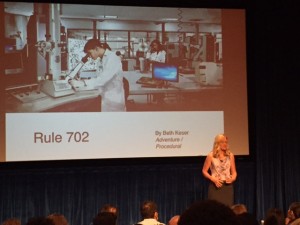
Beth Keser, PhD — Rule 702
Dr. Keser, unique among the winners for being the only pure scientist, is a global leader in the semiconductor industry and leads a technology initiative at San Diego’s Qualcomm. She proposed a crime procedural centered around Mimi, a brilliant scientist with dual PhDs, who forgoes corporate life to be a traveling expert witness for the most complex criminal cases in the world, each of which needs to be investigated and uncovered.
Jayde Lovell — SECs (Science And Engineering Clubs)
Jayde, a rising STEM communication star, launched the YouTube pop science network “Did Someone Say Science?.” Her show proposal is a fun fish-out-of-water drama about 15-year-old Emily, a pretty, popular and privileged high school student. After accidentally burning down her high school gym, she forgoes expulsion only by joining the dreaded, geeky SECs club, and in turn, helping them to win an engineering competition while learning to be cool.
Craig Motlong — Q Branch
Craig is a USC-trained MFA screenwriter and now a creative director at a Seattle advertising agency. His spy action thriller centered around mad scientist Skyler Towne, an engineer leading a corps of researchers at the fringes of the CIA’s “Q Branch,” where they develop and test the gadgets that will help agents stay three steps ahead of the biggest criminals in the world.
Shanee Edwards — Ada and the Machine
Shanee, an award-winning screenwriter, is the film reviewer at SheKnows.com and the host/producer of the web series She Blinded Me With Science. As a fan of traditional scientific figures, Shanee proposed a fictionalized series around real-life 1800s mathematician Ada Lovelace, famous for her work on Charles Babbage’s early mechanical general-purpose computer, the Analytical Engine. In this drama, Ada works with Babbinge to help Scotland Yard fight opponents of the industrial revolution, exploring familiar themes of technology ethics relevant to our lives today.
Craig Motlong, one of five ultimate winners, and one of the few finalists with absolutely no science background, spent several months researching his concept with engineers and CIA experts to see how theoretical technology might be incorporated and utilized in a modern criminal lab. He told me he was equal parts grateful and overwhelmed. “It’s an amazing group of pitches, and seeing everyone pitch their ideas today made me fall in love with each one of them a little bit, so I know it’s gotta be hard to choose from them.”
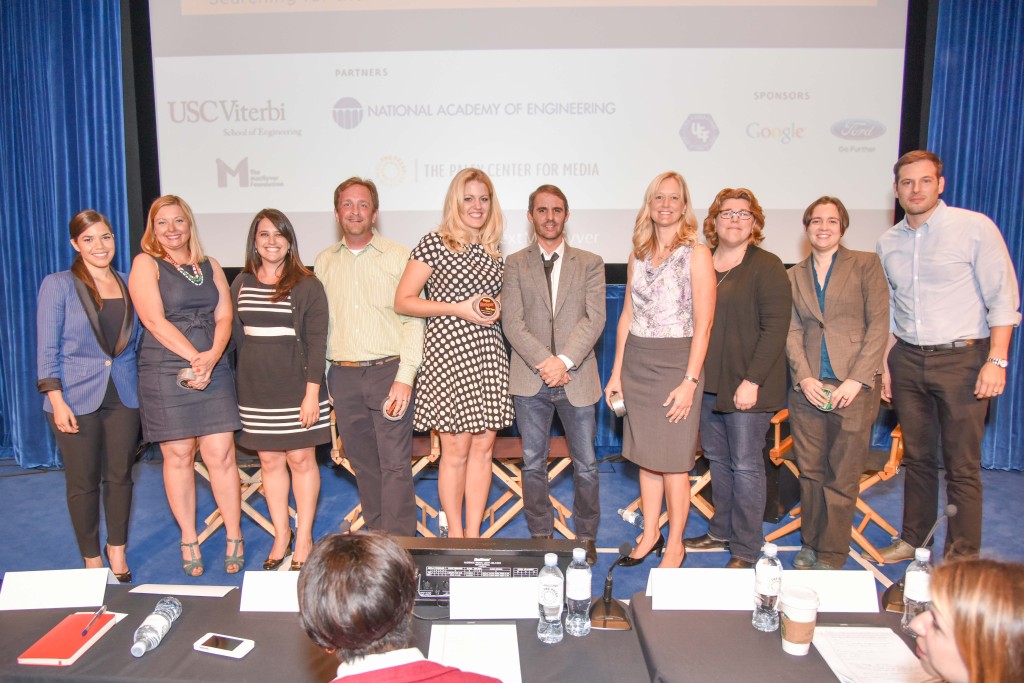
Whether inspired by social change, pragmatic inquisitiveness or pure scientific ambition, this seminal event was ultimately both a cornerstone for strengthening a growing science/entertainment alliance and a deeply personal quest for all involved. “I don’t know if I was as wrapped up in these issues until I had kids,” said USC’s Smith. “I’ve got two little girls, and I tried thinking about what kind of shows [depicting female science protagonists] I should have them watch. There’s not a lot that I feel really good sharing with them, once you start scanning through the channels.” Motlong, the only male winner, is profoundly influenced by his experience of being surrounded by strong women, including a beloved USC screenwriting instructor. “My grandmother worked during the Depression and had to quit because her husband got a job. My mom had like a couple of options available to her in terms of career, my wife wanted to be a genetic engineer when she was little and can’t remember why she stopped,” he reflected. “So I feel like we are losing generations of talent here, and I’m on the side of the angels, I hope.” NAS’s Ann Merchant sees an overarching vision on an institutional level to help achieve the STEM goals set forth by this competition in influencing the next generation of scientist. “it’s why the National Academy of Sciences and Engineering as an institution has a program [The Science and Entertainment Exchange] based out of Los Angeles, because it is much more than this [single competition].”
Indeed, The Next MacGyver event, while glitzy and glamorous in a way befitting the entertainment industry, still seemed to have succeeded wildly beyond its sponsors’ collective expectations. It was ambitious, sweeping, the first of its kind and required the collaboration of many academic, industry and entertainment alliances. But it might have the power to influence and transform an entire pool of STEM participants, the way ER and CSI transformed renewed interest in emergency medicine and forensic science and justice, respectively. If not this group of pitched shows, then the next. If not this group of writers, then the ones who come after them. Searching for a new MacGyver transcends finding an engineering hero for a new age with new, complex problems. It’s about being a catalyst for meaningful academic change and creative inspiration. Or at the very least opening up Hollywood’s eyes and time slots. Zlotoff, whose MacGyver Foundation supported the event and continually seeks to promote innovation and peaceful change through education opportunities, recognized this in his powerful closing remarks. “The important thing about this competition is that we had this competition. The bell got rung. Women need to be a part of the solution to fixing the problems on this planet. [By recognizing that], we’ve succeeded. We’ve already won.”
The Next MacGyver event was held at the Paley Center For Media in Beverly Hills, CA on July 28, 2015. Follow all of the competition information on their site. Watch a full recap of the event on the Paley Center YouTube Channel.
*****************
ScriptPhD.com covers science and technology in entertainment, media and advertising. Hire our consulting company for creative content development. Follow us on Twitter and Facebook. Subscribe to our podcast on SoundCloud or iTunes.
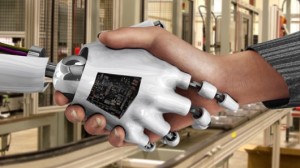
From a sci-fi and entertainment perspective, 2015 may undoubtedly be nicknamed “The Year of The Robot.” Several cinematic releases have already explored various angles of futuristic artificial intelligence (from the forgettable Chappie to the mainstream blockbuster Marvel’s Avengers: Age of Ultron to the intelligent sleeper indie hit Ex Machina), with several more on the way later this year. Two television series premiering this summer, limited series Humans on AMC and Mr. Robot on USA add thoughtful, layered (and very entertaining) discussions on the ethics and socio-economic impact of the technology affecting the age we live in. While Humans revolves around hyper-evolved robot companions, and Mr. Robot a singular shadowy eponymous cyberhacking organization, both represent enthusiastic Editor’s Selection recommendations from ScriptPhD. Reviews and an exclusive interview with Humans creators/writers Jonathan Brackley and Sam Vincent below.
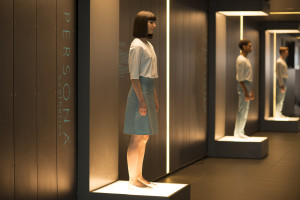
Never in human history has technology and its potential reached a greater permeation of and importance in our daily lives than at the current moment. Indeed, it might even be changing the way our brains function! With entertainment often acting as a reflection of socially pertinent issues and zeitgeist motifs, it’s only natural to examine the depths to which robots (or any artificial technology) might subsume human life. Will they take over our jobs? Become smarter than us? Nefariously affect human society? These fears about the emotional lines between humans and their technology are at the heart of AMC’s new limited series Humans. It is set in the not-too-distant future, where the must have tech accessory is a ‘synth,’ a highly malleable, impeccably programmed robotic servant capable of providing any services – at the individual, family or macro-corporate level. It’s an idyllic ambition, fully realized. Busy, dysfunctional parents Joe and Laura obtain family android Anita to take care of basic housework and child rearing to free up time. Beat cop Pete’s rehabilitation android is indispensable to his paralyzed wife. And even though he doesn’t want a new synth, scientist George Millikan is thrust with a ‘care unit’ Vera by the Health Service to monitor his recovery from a stroke. They can pick fruit, clean up trash, work mindlessly in factories and sweat shops make meals, even provide service in brothels – an endless range of servile labor that we are uncomfortable or unwilling to do ourselves.

Humans brilliantly weaves the problems of this artificial intelligence narrative into multiple interweaving story lines. Anita may be the perfect house servant to Joe, but her omniscience and omnipresence borders on creepiness to wife Laura (and by proxy, the audience). Is Dr. Millikan (who helped craft the original synth technology) right that you can’t recycle them the way you would an old iPhone model? Or is he naive for loving his synth Odi like a son? And even if you create a Special Technologies Task Force to handle synth-related incidents, guaranteeing no harm to humans and minimal, if any, malfunctions, how can there be no nefarious downside to a piece of technology? They could, in theory, be obtained illegally and reprogrammed for subversive activity. If the original creator of the synths wanted to create a semblance of human life – “They were meant to feel,” he maintains – then are we culpable for their enslaved state? Should we feel relieved to see a synth break out of the brothel she’s forced to work in, or another mysterious group of synths that have somehow become sentient unite clandestinely to dream of a dimension where they’re free?
In reality, we already are in the midst of an age of artificial intelligence – computers. Powerful, fast, already capable of taking over our workforce and reshaping our society, they are the amorphous technological preamble to more specifically tailored robots, incurring all of the same trepidation and uncertainty. Mr. Robot, one of the smartest TV pilots in recent memory, is a cautionary tale about cyberhacking, socioeconomic vulnerability and the sheer reliance our society unknowingly places in computers. Its central themes are physically embodied in the central character of Elliot, a brilliant cybersecurity engineer by day/vigilante cyberhacker by night, battling schizophrenia and extreme social anxiety. To Elliott, the ubiquitous nature of computer power is simultaneously appealing and repulsive. Everything is electronic today – money, corporate transactions, even the way we communicate socially. As a hacker, he manipulates these elements with ease to get close to people and to solve injustice (carrying a Dexter-style digital cemetery of his conquests). But as someone who craves human contact he loathes the way technology has deteriorated human interaction and encouraged nameless, faceless corporate greed.

Elliot works for Allstate Security, whose biggest client is an emblem of corporate evil and economic diffidence. When they are hacked, Elliot discovers that it’s a private digital call to arms by a mysterious underground group called Mr. Robot (resembling the cybervigilante group Anonymous). They’ve hatched a plan to to concoct a wide-scale economic cyber attack that will result in the single biggest redistribution of wealth and debt forgiveness in history, and recruited Elliot into their organization. The question, and intriguing premise of the series, is whether Elliot can juggle his clean-cut day job, subversive underground hacking and protecting society one cyberterrorist act at a time, or if they will collapse under the burden of his conscience and mental illness.
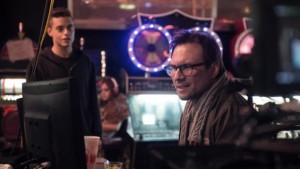
Humans is a purview into the inevitable future, albeit one that may be creeping on us faster than we want it to. Even if hyper-advanced artificial intelligence is not an imminent reality and our fears might be overblown, the impact of technology on economics and human evolution is a reality we will have to grapple with eventually. And one that must inform the bioethics of any advanced sentient computing technology we create and release into the world. Mr. Robot is a stark reminder of our current present, that cyberterrorism is the new normal, that its global impact is immense, and (as with the case of artificial robots), our advancement of and reliance on technology is outpacing humans’ ability to control it.
ScriptPhD.com was extremely fortunate to chat directly with Humans writers Jonathan Brackley and Sam Vincent about the premise and thematic implications of their show. Here’s what they had to say:
ScriptPhD.com: Is “Humans” meant to be a cautionary tale about the dangers of complex artificial intelligence run amok or a hypothetical bioethical exploration of how such technology would permeate and affect human society?
Jonathan and Sam: Both! On one level, the synths are a metaphor for our real technology, and what it’s doing to us, as it becomes ever more human-like and user-friendly – but also more powerful and mysterious. It’s not so much hypothesising as it is extrapolating real world trends. But on a deeper story level, we play with the question – could these machines become more, and if so, what would happen? Though “run amok” has negative connotations – we’re trying to be more balanced. Who says a complex AI given free rein wouldn’t make things better?
SPhD: I found it interesting that there’s a tremendous range of emotions in how the humans related to and felt about their “synths.” George has a familial affection for his, Laura is creeped out/jealous of hers while her husband Joe is largely indifferent, policeman Peter grudgingly finds his synth to be a useful rehabilitation tool for his wife after an accident. Isn’t this reflective of the range of emotions in how humans react to the current technology in our lives, and maybe always will?
J&S: There’s always a wide range of attitudes towards any new technology – some adopt enthusiastically, others are suspicious. But maybe it’s become a more emotive question as we increasingly use our technology to conduct every aspect of our existence, including our emotional lives. Our feelings are already tangled up in our tech, and we can’t see that changing any time soon.
SPhD: Like many recent works exploring Artificial Intelligence, at the root of “Humans” is a sense of fear. Which is greater – the fear of losing our flaws and imperfections (the very things that make us human) or the genuine fear that the sentient “synths” have of us and their enslavement?
J&S: Though we show that synths certainly can’t take their continued existence for granted, there’s as much love as fear in the relationships between our characters. For us, the fear of how our technology is changing us is more powerful – purely because it’s really happening, and has been for a long time. But maybe it’s not to be feared – or not all of it at least…
Catch a trailer and closer series look at the making of Humans here:
And catch the FULL first episode of Mr. Robot here:
Mr. Robot airs on USA Network with full episodes available online.
Humans premieres on June 28, 2015 on AMC Television (USA) and airs on Channel 4 (UK).
*****************
ScriptPhD.com covers science and technology in entertainment, media and advertising. Hire our consulting company for creative content development. Follow us on Twitter and Facebook. Subscribe to our podcast on SoundCloud or iTunes.
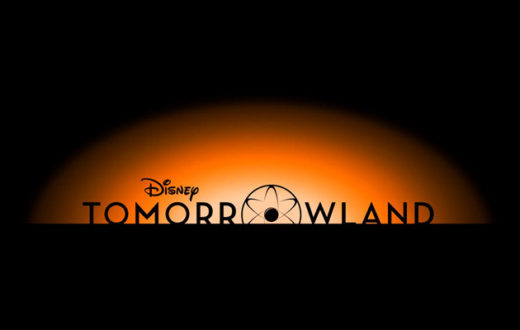
One of Walt Disney’s enduring lifetime legacies was his commitment to innovation, new ideas and imagination. An inventive visionary, Disney often previewed his inventions at the annual New York World’s Fair and contributed many technological and creative breakthroughs that we enjoy to this day. One of Disney’s biggest fascinations was with space exploration and futurism, often reflected thematically in Disney’s canon of material throughout the years. Just prior to his death in 1966, Disney undertook an ambitious plan to build a utopian “Community of Tomorrow,” complete with state-of-the-art technology. Indeed, every major Disney theme park around the world has some permutation of a themed section called “Tomorrowland,” first introduced at Disneyland in 1955, featuring inspiring Jules Verne glimpses into the future. This ambition is beautifully embodied in Disney Picttures’ latest release of the same name, a film that is at once a celebration of ideas, a call to arms for scientific achievement and good old fashioned idealistic dreaming. The critical relevance to our circumstances today and full ScriptPhD review below.
“This is a story about the future.”
With this opening salvo, we immediately jump back in time to the 1964 World’s Fair in New York City, the embodiment of confidence and scientific achievement at a time when the opportunities of the future seemed limitless. Enthusiastic young inventor Frank Walker (Thomas Robinson), an optimistic dreamer, catches the attention of brilliant scientist David Nix (Hugh Laurie) and his young sidekick Athena, a mysterious little girl with a twinkle in her eye. Through sheer curiosity, Frank follows them and transports himself into a parallel universe, a glimmering, utopian marvel of futuristic industry and technology — a civilization gleaming with possibility and inspiration.

“Walt [Disney] was a futurist. He was very interested in space travel and what cities were going to look like and how transportation was going to work,” said Tomorrowland screenwriter Damon Lindelof (Lost, Prometheus). “Walt’s thinking was that the future is not something that happens to us. It’s something we make happen.”
Unfortunately, as we cut back to present time, the hope and dreams of a better tomorrow haven’t quite worked out as planned. Through the eyes of idealistic Casey Newton (Britt Robertson), thrill seeker and aspiring astronaut, we see a frustrating world mired in wars, environmental devastation and selfish catastrophes. But Casey is smart, stubborn and passionate. She believes the world can be restored to a place of hope and inspiration, particularly through science. When she unexpectedly obtains a mysterious pin — which we first glimpsed at the World’s Fair — it gives her a portal to the very world that young Frank traveled to. Protecting Casey as she delves deeper into the mystery is Athena, who it turns out is a very special time-traveling recruiter. She distributes the pins to a collective of the smartest, most creative people, who gather in the Tomorrowland utopia to work and invent free of the impediments of our current society.

Athena connects Casey with a now-aged Frank (George Clooney), who has turned into a cynical, reclusive iconoclastic inventor (bearing striking verisimilitude to Nikola Tesla). Casey and Frank must partner to return to Tomorrowland, where something has gone terribly awry and imperils the existence of Earth. David Nix, a pragmatic bureaucrat and now self-proclaimed Governor of a more dilapidated Tomorrowland, has successfully harnessed subatomic tachyon particles to see a future in which Earth self-destructs. Unless Casey and Frank, aided by Athena and a little bit of Disney magic, intervene, Nix will ensure the self-fulfilling prophesy comes to fruition.
As the co-protagonist of Tomorrowland Casey Newton symbolizes some of the most important tenets and qualities of a successful scientist. She’s insatiably curious, in absolute awe of what she doesn’t know (at one point looking into space and cooing “What if there’s everything out there?”) and buoyant in her indestructible hope that no challenge can’t be overcome with enough hard work and out-of-the-box originality. She loves math, astronomy and space, the hard sciences that represent the critical, diverse STEM jobs of tomorrow, for which there is still a graduate shortage. That she’s a girl at a time when women (and minorities) are still woefully under-represented in mathematics, engineering and physical science careers is an added and laudable bonus. She defiantly rebels against the layoff of her NASA-engineer father and the unspeakable demolition of the Cape Canaveral platform because “there’s nothing to launch.” The NASA program concomitantly faces the tightest operational budget cuts (particularly for Earth science research) and the most exciting discovery possibilities in its history.

The juxtaposition of Nix and Walker, particularly their philosophical conflict, represents the pedantic drudgery of what much of science has become and the exciting, risky brilliance of what it should be. Nix is pedantic and rigid, unable or unwilling to let go of a traditional credo to embrace risk and, with it, reward. Walker is the young, bushy-tailed, innovative scientist that, given enough rejection and impediments, simply abandons their research and never fulfills their potential. This very phenomenon is occurring amidst an unprecedented global research funding crisis — young researchers are being shut out of global science positions, putting innovation itself at risk. Nix’s prognostication of inevitable self-destruction because we ignore all the warning signs before our eyes, resigning ourselves to a bad future because it doesn’t demand any sacrifice from our present is the weary fatalism of a man that’s given up. His assessment isn’t wrong, he’s just not representative of the kind of scientist that’s going to fix it.
“Something has been lost,” Tomorrowland director Brad Bird believes. “Pessimism has become the only acceptable way to view the future, and I disagree with that. I think there’s something self-fulfilling about it. If that’s what everybody collectively believes, then that’s what will come to be. It engenders passivity: If everybody feels like there’s no point, then they don’t do the myriad of things that could bring us a great future.”
Walt Disney once said, “If you can dream it, you can do it.” Tomorrowland‘s emotional call for dreamers from the diverse corners of the globe is the hope that can never be lost as we navigate a changing, tumultuous world, from dismal climate reports to devastating droughts that threaten food and water supply to perilous conflicts at all corners of our globe. Because ultimately, the precious commodity of innovation and a better tomorrow rests with the potential of this group. We go to the movies to dream about what is possible, to be inspired and entertained. Utilizing the lens of cinematic symbolism, this film begs us to engage our imaginations through science, technology and innovation. It is the epitome of everything Walt Disney stood for and made possible. It’s also a timely, germane message that should resonate to a world that still needs saving.
Oh, and the blink-and-you-miss-it quote posted on the entrance to the fictional Tomorrowland? “Imagination is more important than knowledge.” —Albert Einstein.
View the Tomorrowland trailer:
Tomorrowland goes into wide release on May 22, 2015.
*****************
ScriptPhD.com covers science and technology in entertainment, media and advertising. Hire our consulting company for creative content development. Follow us on Twitter and Facebook. Subscribe to our podcast on SoundCloud or iTunes.
Every so often, a seminal film comes out that ends up being the hallmark of its genre. 2001: A Space Odyssey redefined space and technology in science fiction. Star Wars proved sci-fi could provide blockbuster material, while Blade Runner remains the standard-bearer for post-apocalyptic dystopia. A slate of recent films have broached varying scenarios involving artificial intelligence – from talking robots to sentient computers to re-engineered human capacity. But Ex Machina, the latest film from Alex Garland (writer of the pandemic horror film 28 Days Later and the astro-thriller Sunshine) is the cream of the crop. A stylish, stripped-down, cerebral film, Ex Machina weaves through the psychological implications of an experimental AI robot named Ava possessing preternatural emotional intelligence and free will. It’s a Hitchcockian sci-fi thriller for the geek chic gadget-bearing age, a vulnerable expository inquiry into the isolated meaning of “sentience” (something we will surely contend with in our time) and an honest reproach of technology’s boundless capabilities that somehow manages to celebrate them at the same time.
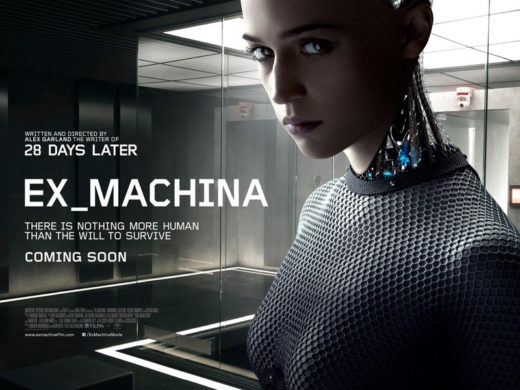
ScriptPhD.com’s enthusiastic review of this visionary new sci-fi film includes an exclusive Q&A with writer and director Alex Garland from a recent Los Angeles screening.
The preoccupation with superior artificial intelligence as a thematic idea is not a recent phenomenon. After all, Frankenstein is one of the pillars of science fiction – an ode to hypothetical human engineering gone awry. Terminator and its many offshoots gave rise to robotics engineering, whether as saviors or disruptors of humanity. But over the last 16 months, a proliferation of films centered around the incorporation of artificial intelligence in the ongoing microevolution of humanity has signaled a mainstream arrival into the zeitgeist consciousness. 2014 was highlighted with stylish and ambitious but ultimately overmatched digital reincarnation film Transcendence to the understated yet brilliant digital love story Her to the surprisingly smart Disney film Big Hero 6. This year amplifies that trend, with Avengers: Age of Ultron and Chappie marching out robots Elon Musk could only dream about among many other later releases. Wedged in-between is Ex Machina, taking its title from the Latin Deus Ex Machina (God from the machine), a film that prefers to focus on the bioethics and philosophy of scientific limits rather than the razzle-dazzle technology itself. There is still a tendency for sci-fi films concerning AI to engross themselves in presenting over-the-top science, with ensuing wholesale consequences based on theoretical technology, which ultimately hinders storytelling. Ex Machina is a simple story about two male humans, a very advanced-intelligence generated AI robot named Ava, confined in a remote space together, and the life-changing consequences that their interactions engender as a parable for the meaning of humanity. It will be looked back on as one of the hallmark films about AI.
When computer programmer Caleb Smith (Domhall Gleeson) wins an exclusive private week with his search engine company’s CEO Nathan Bateman (Oscar Isaac) it seems like a dream come true. He is helicoptered to the middle of a verdant paradise, where Nathan lives as a recluse in a locked-down, self-sufficient compound. Only Nathan plans to let Caleb be the first to perform a Turing Test on an advanced humanistic robot named Ava (Alicia Vikander). (Incidentally, the technology of creating a completely new robot for cinema was a remarkable process, as the filmmakers discussed in-depth in the New York Times.) The opportunity sounds like a geek’s dream come true, only as the layers slowly peel back, it is apparent that Caleb’s presence is no accident; indeed, the methodology for how Nathan chose him is directly related to the engineering of Ava. Nathan is, depending on your viewpoint, at best a lonely eccentric and at worst an alcoholic lunatic.

For two thirds of the movie, tension is primarily ratcheted through Caleb’s increasingly tense interviews with Ava. She’s smart, witty, curious and clearly has a crush on him. Is something like Ava even possible? Depending on who you ask, maybe not or maybe it already happened. But no matter. The latter third of the movie provides one breathtaking twist after another. Who is testing and manipulating whom? Who is really the “intelligent being” of the three? Are we right to be cautionary and fear AI, even stop it in its tracks before it happens? With seemingly anodyne versions of “helpful robots” already in existence, and social media looking into implementing AI to track our every move, it may be a matter of when, not if.
The brilliance of Alex Garland’s sci-fi writing is his understanding that understated simplicity drives (and even heightens) dramatic tension. Too many AI and techno-futuristic films collapse under the crushing weight of over-imagined technological aspirations, which leave little room for exploring the ramifications thereof. We start Ex Machina with the simple premise that a sentient, advanced, highly programmed robot has been made. She’s here. The rest of the film deftly explores the introspective “what now?” scenarios that will grapple scientists and bio-ethicists should this technology come to pass. What is sentience and can a machine even possess self-awareness? Is their desire to be free of the grasp of their creators wrong and should we allow it? Most importantly, is disruptive AI already here in the amorphous form of social media, search history and private data collected by big technology companies?
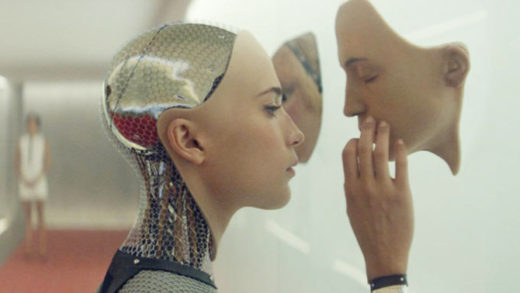
The vast majority of Ex Machina consists of the triumvirate of Nathan, Caleb and Ava, toggling between scenes with Nathan and Caleb and Caleb interviewing (experimenting on?) Ava between a glass facade. The progression of intensity in the numbered interviews that comprise the Turing Test are probably the most compelling of the whole film, and nicely set-up the shocking conclusion. In its themes of the human/AI dichotomy and dialogue-heavy tone, Ex Machina compares a lot to last year’s brilliant sci-fi film Her, which rightfully won Spike Jonze the Oscar for Best Original Screenplay. In the former, a lonely professional letter writer becomes attached to and eventually falls in love with his computer operating system Samantha. Eventually, we see the limitations of a relationship void of human contact and the peculiar idiosyncrasies that make us so distinct, the very elusive elements that Samantha seeks to know and understand. (Think this scenario is far off? Many tech developers feel it is not only inevitable but not too far away.To that degree, both of these films show two kinds of sentient future technology chasing after human-ness, yearning for it, yet caution against a bleak future where they supplant it. But whereas Her does so in a sweetly melancholy sentimental fashion, Ex Machina plants a much darker, psychologically prohibitive conclusion.
It turns out that the most terrifying scenario isn’t a world in which artificial intelligence disrupts our lives through a drastic shift in technology. It’s a world in which technology seamlessly integrates itself into the lives we already know.
View the official Ex Machina trailer here:
Alex Garland, writer and director of Ex Machina, stayed after a recent Los Angeles press screening to give an insightful, profound question and answer session about the artificial intelligence as portrayed in the film and its relationship to the recent slew of works depicting interactive technology.
Ava [the robot created by Nathan Bateman] knew what a “good person” was. Why wasn’t she programmed by Nathan to just obey the commandments and not commit certain terrible acts that she does in the film?
AG: The same reason that we aren’t programmed that way. We are asked not to [sin] by social conventions, but no one instructs or programs us not to do it. And yet, a lot of us do bad things. Also, I think what you’re asking is – is Ava bad? Has she done something wrong? And I think that depends on how you choose to look at the movie. I’ve been doing stories for a while, and you hand the story over and you’ve got your intentions but I’ve been doing it for long enough to know that people bring their own [bias] into it.
The way I saw this movie was it was all about this robot – the secret protagonist of the movie. It’s not about these two guys. That’s a trick; an expectation based on the way it’s set up. And if you see the story from her point of view, if her is the right word, she’s in a prison, and there’s the jailer and the jailer’s friend and what she wants to do is get out. And I think if you look at it from that perspective what she does isn’t bad, it’s practical. Yes, she tricks them, but that’s okay. They shouldn’t have been dumb. If you arrive in life in this place, and desire to get out, I think her actions are quite legitimate.
So, that’s a very human-like quality. So let’s say that you’re confronted with a life or death situation with artificial intelligence. Do you have any tricks that you would use [to survive]?

AG: If I’m hypothetically attacked by an AI, I don’t know… run. I think the real question is whether AI is scary. Should we fear them? There’s a lot of people who say we should. Some smarter people than me such as Elon Musk, Stephen Dawkins, and I understand that. This film draws parallels with nuclear power and [Oppenheimer’s caution]. There’s a latent danger there in both. Yet, again, I think it depends on how you frame it. One version of this story is Frankenstein, and that story is a cautionary tale – a religious one at that. It’s saying “Man, don’t mess with God’s creationary work. It’s the wrong thing to do.”
And I framed this differently in my mind. It’s an act of parenthood. We create new conciousnesses on this planet all the time – everyone in this room, everyone on the planet is a product of other people having created this consciousness. If you see it that way, then the AI is the extension of us, not separate from us. A product of us, of something we’ve chosen to do. What would you expect or want of your child? At the bare minimum, you’d want for them to outlive you. The next expectation is that their life is at least as good as yours and hopefully better. All of these things are a matter of perspective. I’m not anti-AI. I think they’re going to be more reasonable than us, potentially in some key respects. We do a lot of unreasonable stuff and they may be fairer.
On the subject of reproduction, in this film, Ava was anatomically correct. Had it been a male, would he have been likewise built correctly?
AG: If you made the male AI in accordance with the experiment that this guy is trying to conduct, then yes. This film is an “ideas movie.” Sometimes it’s asking a question and then presenting an answer, like “Does she have empathy?” or “Is she sentient?”. Sometimes, there isn’t an answer to the question, either because I don’t know the answer or because no one does. The question you’re framing is not “Can you [have sex] with these AI?” it’s “Where does the gender reside?” Where does gender exist in all of us. Is it in the mind, or in the body? It would be easy to construct an argument that Ava has no gender and it would seem reasonable in many respects. You could take her mind and put it in a male body and say “Well, nothing is substantially changed. This is a cosmetic difference between the two.” And yet, then you start to think about how you talk about her and how you perceive her. And to say “he” of Ava just seems wrong. And to say “it” seems weirdly disrespectful. And you end up having this genderless thing coming back to she.
In addition, if you’re going to say gender is in the mind, then demonstrate it. That’s the question I’m trying to provoke. When they have that conversation halfway through the film, these implicit questions, if gender is in the mind, then what is it? Does a man think differently from a woman? Is that really true? Think of something that a man would always think, and you’ll find a man that doesn’t always think that, and you’ll find a woman that does. These are the implicit questions in the film. They don’t all have answers. The key thing about the gender thing isn’t about who is having sex with whom. It’s that this young man is tasked with thinking about what’s going on inside of this machine’s head. That’s his job is to figure that out. And at a certain point he stops thinking about her and he gets it wrong. That’s the issue – why does he stop thinking about it? If the plot shifts in this worked on the audience or any of you in the same way as they worked on the young man, why was that?
Was one of your implicit messages in the film for people to be more conscientious about what they’re sharing on the internet, whether in their searches or social media, and thereby identifying their interests “out there” and how that might be potentially used?
AG: Yes, absolutely. It’s a strange thing, what zeitgeist is. Movies take ages [to make] sometimes – like two and a half years at least. I first wrote this script about four years ago. And then, I find out as we go through production that we’re actually late to the party. There are a whole bunch of films about AI – Transcendance, Automator, Big Hero 6, Age of Ultron [coming out next month], Chappie. Why is that? There hasn’t been any breakthrough in AI, so why are all these people doing this at the same time? And I think it’s not AIs, I think it’s search engines. I think it’s because we’ve got laptops and phones and we, those of us outside of tech, don’t really understand how they work. But we have a strong sense that “they” understand how “we” work. They anticipate stuff about us, they target us with advertising, and I think that makes us uneasy. And I think that these AI stories that are around are symptomatic of that.
That bit in the film about [the dangers of internet identity], in a way it obliquely relates to Edward Snowden, and drawing attention to what the government is doing. But if people get sufficiently angry, they can vote out the government. That is within the power of an electorate. Theoretically, in capitalist terms, consumers have that power over tech companies, but we don’t really. Because that means not having a mobile phone, not having a tablet, a computer, a credit card, a television, and so on. There is something in me that is worried about that. I actually like the tech companies, because I think they’re kind of like NASA in the 1960s. They’re the people going to the moon. That’s great – we wanted to go to the moon. But I’m also scared of them, because they’ve got so much power and we tend not to cope well with a lot of power. So yes, that’s all in the film.
You mentioned Elon Musk earlier, who looks a little bit like [Google co-founder] Sergei Brin. Which tech executive would you say CEO Nathan Batemn is most modeled after?
AG: He wasn’t exactly modeled after an exec. He was modeled more like the companies in some respect. All that “dude, bro” stuff. I sometimes feel that’s what they’re doing. Not to generalize, but it’s a little bit like that – we’re all buddies, come on, dude. While it’s rifling through my wallet and my address book. It’s misleading, a mixed message. I don’t want to sound paranoid about tech companies. I do really like them, I think they’re great. But I think it’s correct to be ambivalent about them. Because anything which is that powerful and that unmarshalled you have to be suspicious of, not even for what we know they’re doing but for what they might do. So, Nathan is more [representative of] a vibe than a person.
For someone equally as scared of AI as Alex is of tech companies, what is the gap between human intelligence and AI intelligence that exists today? How long before we have AI as part of our daily lives?
AG: One of the great pleasures of working on this film was contacting and discussing with people who are at the edge of AI research. I don’t think we’re very close at all. It depends on what you’re talking about. General AI, yes, we’re getting closer. Sentient machines, it’s not even in the ballpark. It’s similar in my mind to a cure for cancer. You can make progress and move forward, but sometimes by going forward it highlights that the goal has receded by complexity. I know Ray Kurtzweil makes some sort of quantified predictions – in 20 years, we’ll be there. I don’t know how you can do that. He’s a smart guy, maybe he’s right. As far as I can tell, in talking to the people who are as close to knowing [about the subject] as I can encounter, it’s something that may or may not happen. And it will probably take a while.
One of the things that’s always bothered me about the Turing Test is that it’s not seeking to know whether or not the thing you’re dealing with is an artificial intelligence. It’s – can you tell that it is? And that’s always bothered me as a kind of weird test. You have a 20,000 question survey, and in the end this one decision comes from a binary point of view. It seems almost flawed.
AG: Yes, you’re completely right. Apart from the fact that it was configured quite a long time ago, it’s primarily a test to see if you can pass the Turing Test. It doesn’t carry information about sentience or potential intelligence. And you could certainly game it. But, it’s also incredibly difficult to pass. So in that respect it’s a really good test. It’s just not a test of what it’s perceived to be a test of, typically. This [experiment in the movie] was supposed to be like a post-Turing Turing Test. The guy says she passed with blind controls, he’s not interested in whether she’ll pass. He’s not interested in her language capacity, which is comparable to a chess computer that wants to win at chess, but doesn’t even know whether it’s playing chess or that it’s a computer. This is the thing you’d do after you pass the Turing Test. But I totally agree with everything you said.
In your research, is there a test that’s been developed that is the reverse of the Turing Test, that seeks to answer whether, in the face of so much technology development, we’ve lost some of our innate human-ness? Or that we’re more machine like?
AG: I think we are machine-like. As far as I know, no test exists like that. The argument at the heart of these things is: is there a significant difference between what a machine can do and what we are? I think how I see this is that we sometimes dignify our conciousness. We make it slightly metaphysical and we deify it because it’s so mysterious to us. An we think, are computers ever going to get up to the lofty heights where we exist in our conciousness? And I suspect that we should be repositioning it here, and we overstate us, in some respects. That’s probably the opposite of what you want to hear.
Do you think that some machine-like quality predates the technology?
AG: I do, yes. I suspect all our human aspects are through evolution, that’s how I think we got here. I can see how conciousness arises from needing to interact in a meaningful and helpful way with other sentient things. Our language develops, and as these things get more sophisticated, conciousness becomes more useful and things that have higher conciousness succeed better. Also, I heard someone talk about conciousness the other day and they were saying “One day, it’s possible that elephants will become sentient.” And that’s a really good example of how we misunderstand sentience. Elephants are already sentient. If you put a dog in front of a mirror, it recognizes its own reflection. It’s self-aware. It knows it’s not looking at another dog. So I put us on that spectrum.
Pertaining to that question, there’s a [critical] moment in the movie where Caleb cuts himself in front of a mirror to make sure that he’s bleeding. And I was going to ask if that’s symbolic of that evolution where conciousness can be undifferentiated between a human and a machine? I was wondering if that scene is a subtle hint that you don’t really know whether you’re the one that is being tested or you’re the tester?
AG: There’s two parts [to that scene]. One is film audiences are literate. I kind of assume that everyone who’s seen that has seen Blade Runner. So they’re going to be imagining to themselves, it’s not her [that is the AI] it’s him. He’s the robot. Here’s the thing. If someone asks of you, here’s a machine, test that machine’s conciousness, tell me if it’s concious or not, it turns out to be a very difficult thing to do. Because [the machine] could act convincingly that it’s concious, but that wouldn’t tell you that it is. Now, once you know that, that actually becomes true of us. You don’t know I’m concious. You think I’m probably concious, you’re not really questioning it. But you believe you are concious, and because I’m like you, I’m another human, you assume I’ve got it. But I’m doing anything that empirically demonstrates that I am concious. It’s an act of faith. And once you know that, you’ve figured that out about the machine and now you can figure it out about the other person. Weirdly, then you can ask it of yourself. That’s where the diminished sense of conciousness comes into it. The things that I believe are special about me are the things I’m feeling – love, fear. And then you think about electrochemicals floods in your brain and the things we’ve been taught and the things we’ve been born with and our behavior patterns and suddenly it gets more and more diminished. To the point that you can think something along the lines of “Am I like a complicated plant that thinks it’s a human?” It’s not such an unreasonable question. So cut your arm and have a look!
In thinking about being a complicated plant, that sounds very isolating. Nathan was really isolated in the movie as well. Do you think that this is indicative of where we’re going with our devices and internet and social media being our social outlet rather than actually socializing? Is AI taking us down that path of isolation?
AG: It may or may not. That could be the case. I’m not on Twitter, I’ve never been on Facebook, I’m not really too [fond of] that stuff. From the outside looking in, it looks like that’s the way people communicate – maybe in a limited way, but in a way I don’t really know. The thing about Nathan is we’re social animals, and our behavior is incredibly modified by people around us. And when we’re removed from modification, our behavior gets very eccentric very fast. I think of it like a kid holding on to a balloon and then they let it go and in a flash it’s gone. I know this because my job is I’m a writer and if I’m on a roll, I can spend six days where I don’t leave the house, I barely see my kids in the corridor, but I’m mainly interested in the fridge and the computer. And I get weird, fast. It’s amazing how quickly it happens. I think anyone who’s read Heart of Darkness or seen the adaptation Apocalypse Now, [Nathan] is like this character Kurtz. He spends too much time upriver, too much time unmodified by the influences that social interactions provide.
Ex Machina goes into wide release in theaters on April 10, 2015.
*****************
ScriptPhD.com covers science and technology in entertainment, media and advertising. Hire our consulting company for creative content development. Follow us on Twitter and Facebook. Subscribe to our podcast on SoundCloud or iTunes.